In this article, we’ll help you discover all the free things to do in Rome. From the top landmarks to some hidden gems, this list will cover everything you need to know about discovering the best free activities in Rome.
Rome, the Eternal City, constantly calling you to explore its rich history, iconic architecture, and timeless charm. While it may be known for its opulent landmarks and lavish experiences, there’s a side of Rome that invites you to indulge in its beauty without breaking the bank. In this guide, we unveil the best free things to do in Rome, offering a budget-friendly journey through the heart of Italy’s capital.
Beyond the bustling crowds and tourist traps, Rome hides a treasure trove of experiences that won’t cost you a dime. From ancient ruins to picturesque parks, cultural gems to breathtaking viewpoints, we’re here to show you all the things you can do without pulling out your wallet.
From artistic masterpieces to hidden gems, get ready to explore the city like a local and discover its authentic charm without spending a euro.
An important note, if you plan on visiting Rome in 2025
Starting on December 24, 2024, and running until January 6, 2026, the Catholic Church will be celebrating the Holy Year 2025. It is observed every 25 years as a time for spiritual renewal and celebration. This year’s theme is Pilgrims of Hope and the event will start with Pope Francis opening the Holy Door of St. Peter’s Basilica.
During this time, millions of pilgrims are expected to visit Rome to participate in religious events. There are major concerns about the readiness of infrastructure and the impact on local residents, including housing shortages due to the conversion of apartments into short-term rentals for pilgrims.
This also means that there will be an increased number of tourists in the city.
If you are thinking of visiting Rome during these dates, we highly advise you plan ahead. Book accommodations, restaurants and activities as early as you can. Avoiding crowds might be difficult overall. Start your days early and try to head to the lesser known parts of the city.
For all the even details, check out the official Jubilee site here.
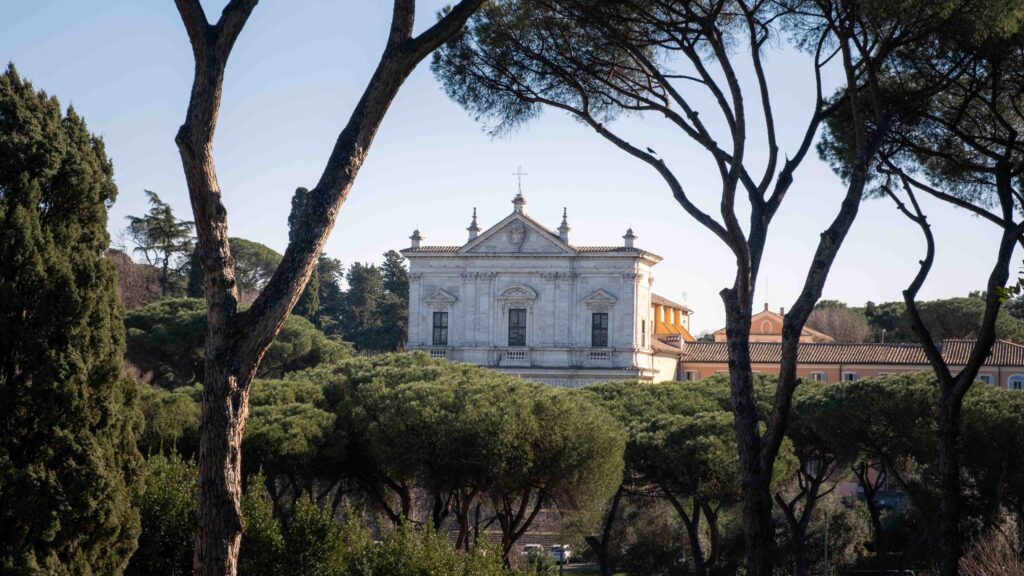
This article may contain affiliate/compensated links. For more information, please see our disclaimer here. We take all the efforts necessary to ensure the information included in this post is accurate, correct and current, sometimes, things just change! Travel information like opening hours, business operations and prices may change. If you find anything in this post that is incorrect or outdated, please let me know in the comments so I can update it for other readers. Cheers!
We love helping you plan amazing trips. If you need any of these services, consider booking them through our affiliate links. Without costing you anything extra, you will be helping support us so we can continue to write these blogs for you.
We thank you again for your continued support.
🏠 Find the perfect place to stay with Booking.com
✈️ Get the cheapest flights with Skyscanner
🚣 Book your favorite activities with Viator
💻 Make sure you have everything you need for your epic trip by checking our store on Amazon
Top 5 tips for visiting Rome
Before we get started, we wanted to share some top tips with you for your trip to Rome. Although some of them do require spending some money, at the end of the day, they will also help you save money! These are little tips to help you have an amazing time in Rome:
- Get the Omnia 3-day pass: This pass is a lifesaver to skip the line and get free transportation. With it, you can access Rome’s top sights + Hop-on Hop-off bus tour + 72h travel card. It’s a two-in-one pass with an OMNIA Card and a Roma Pass. You’ll skip the line at Vatican Museums & in the Sistine Chapel. You can enjoy access to The Colosseum. And, you can take advantage of free unlimited public transport for the validity of your pass.
- The free wifi here is not the safest… you don’t want to get hacked on your first trip to Rome! If you don’t have a European SIM card, we recommend getting an eSIM with Airalo (if your phone supports it). It’s the easiest way to get data when you travel.
Use the code CARINE5115 to get $3 off your package. - Take this airport shuttle: It’s the cheapest and one of the most efficient ways to get to and from the FCO airport to the city.
- Skip the line for the Colosseum, Palatine Hill & Roman Forum: Skip the line and learn all the interesting facts about these historic places in Rome. This tour will help you do just that! If you’re getting the Omnia 3-day pass, no need to get this to skip the line. Only buy this package if you want a guided tour.
- Don’t wait to see the Sistine Chapel & Vatican: Skip the line to see the works of art in the Vatican Museums and Sistine Chapel. Again, if you’re getting the Omnia 3-day pass, no need to get this to skip the line. Only buy this package if you want a guided tour.
If you’re looking for more tips, hacks and general travel advice when planning your trip to Rome, make sure you read our full article here.
The 32 best free things to do in Rome
We’re so excited to take you through the best things to do in Rome that are completely free. We know things can get expensive in Rome – especially if your local currency isn’t as strong as the Euro… yup, we’re looking at you Canadian Dollar!
But the great news is, even if you’re on a budget, you can still enjoy the best Rome has to offer without pulling out your wallet. You can see some of the best attractions in Rome or even its hidden gems. Yes, all for free!
To help you out, we’ve broken the article up into different sections where we’ve grouped the landmarks together, from the most iconic attractions to activities, hidden gems, museums, and some more tips that will help you have an amazing time.
So let’s get started!
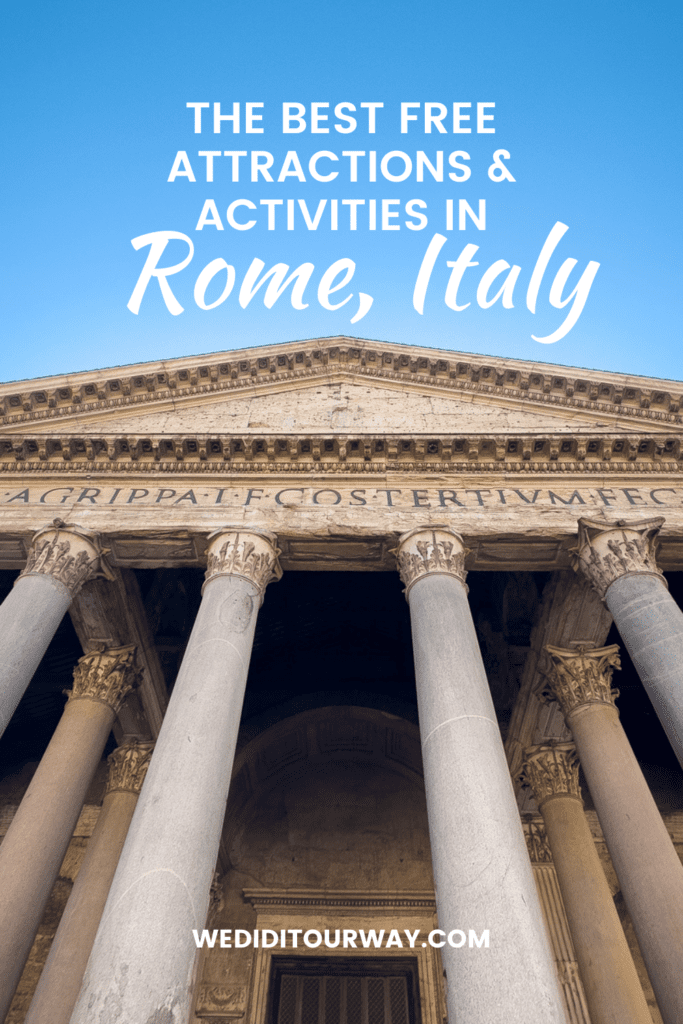

Iconic free attractions in Rome
Here are all of the most iconic landmarks you can see for free in Rome. Some of these are absolute musts if you’re on your first trip to Rome. But they’re also fun to visit if you’re on your fifth trip here.
Although some of these places are opulent and straight-up luxurious, the good news is you don’t have to spend a single penny to see them. From the iconic St. Peter’s Basilica to the Roman Forum and the Trevi Fountain.
https://www.google.com/maps/d/u/0/edit?mid=1JeMBYWbmJqqlBh-XFyoYB87m016y4eM&usp=sharing1. St. Peter’s Basilica, the largest cathedral in the world – A top free thing to do in Rome
We’ll start the list off easy with a typical Rome must-see. And luckily, it’s free to discover! This is one of the largest churches and the tallest dome in the world. It’s also one of the most notable landmarks in the city, and a definite must when you visit Rome for 3 days. It’s also home to one of Michelangelo’s masterpieces – the Pietra sculpture.
But we can’t credit Michelangelo for all the beauty in the Basilica, since its construction spans over 120 years. From the early 16th to the 17th century, many notable architects and artists were involved, including Michelangelo, Bramante, and Bernini.
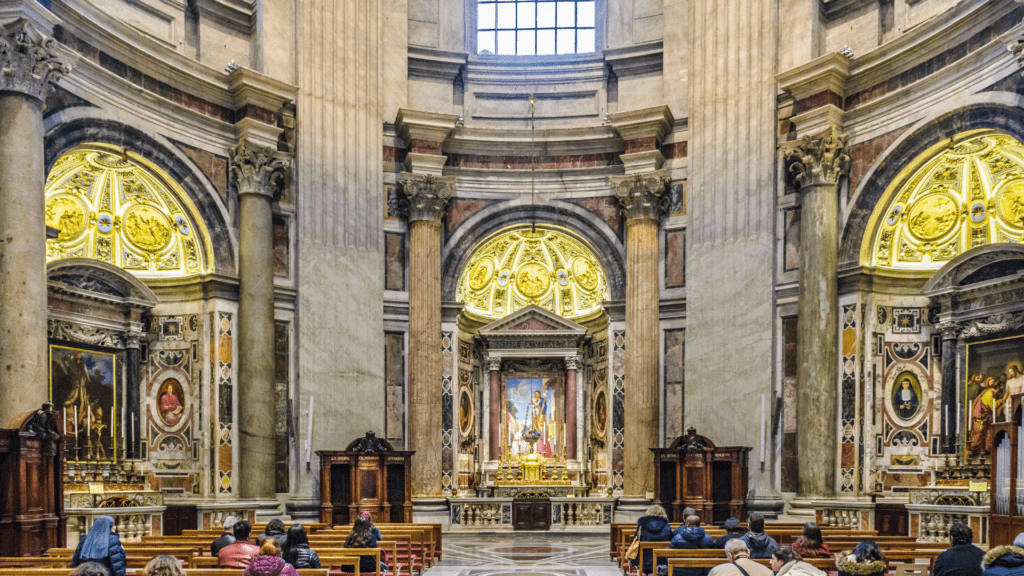
Entrance to St. Peter’s Basilica is absolutely free. It’s such an important part of Rome’s history (and present) that we highly recommend you make time to visit it. It’s impressive to admire, not only because of its sheer grandeur but also because of the intricate work of the pieces here. It’s an architectural wonder!
If you want to be even more impressed, you can climb up to the cupola (dome) of the Basilica. This might be the most beautiful view you’ll get of the city during your 3-day itinerary in Rome. You can also visit the Vatican Necropolis, the final resting place of several popes, including St. Peter himself (supposedly)! Just note that the hike up to the cupola is not free. Price varies between €6 to €8, depending on if you take the lift or not.
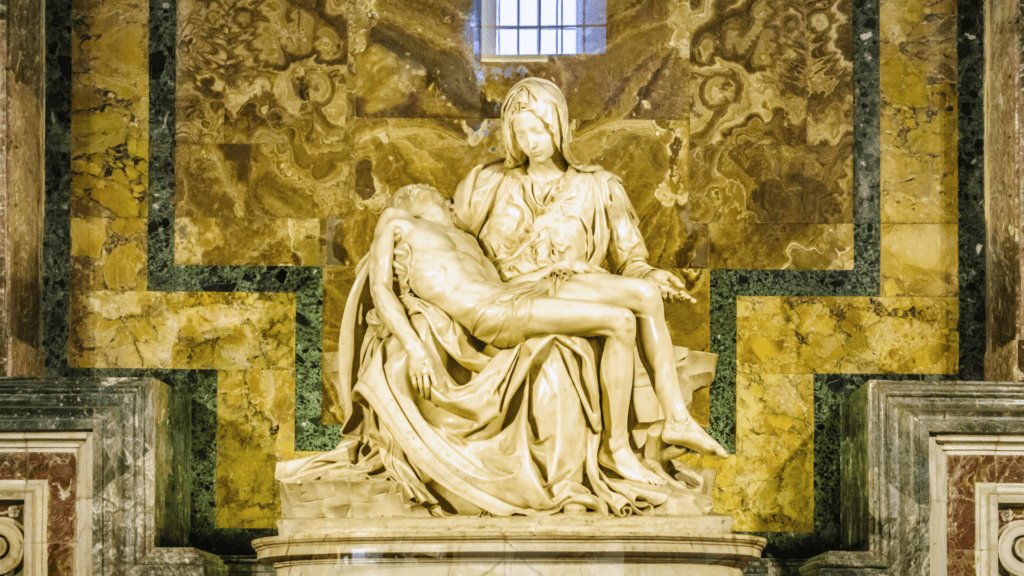
Whether you’re visiting Rome on a budget or not, the Basilica is definitely one of the best free attractions in Rome. And if you plan your visit ahead of time, you might even be able to get an audience with the Pope. More on that later!
Quick tip: If you don’t want to get a skip-the-line ticket to visit St. Peter’s Basilica, make sure you arrive before opening. It’s the only way to avoid the crowds. And if you want more tips and hacks about visiting the best landmarks in Rome, check out our article here.
INFORMATION ABOUT THE SAINT PETER’S BASILICA
Official Site
Name in Italian: Basilica di San Pietro
Opening hours: Open daily from 7 am to 7:10 pm. The dome opens at 7:30 am and closes at 6 pm. Note that there is mass conducted daily. Check the official site for hours and special holidays.
Ticket price: The Basilica is free to visit. The cost for the dome: Lift to the terrace – €8, climbing all 500+ steps by foot – €6
Location: Check here on Google Maps.
Transport: Metro line A, Ottaviano stop. For the bus, check the instructions here.
How long to spend: You’ll need a good 2-3 hours here.
2. Explore the Roman Forum without paying an entrance fee
Ok, so this is a bit of a cheat. You won’t be able to walk around the Roman forum for free. You need to pay an entrance fee, which includes the Colosseum entrance as well. But, you can see major parts of the Roman Forum from the street! Win!
If you’re like us and love walking around cities to discover them, this free thing to do in Rome is for you! The Roman Forum is visible from many different points on Via dei Fori Imperiali. You can see it from the Altar of the fatherland, Campidoglio (Capitoline Hill) and many other spots.
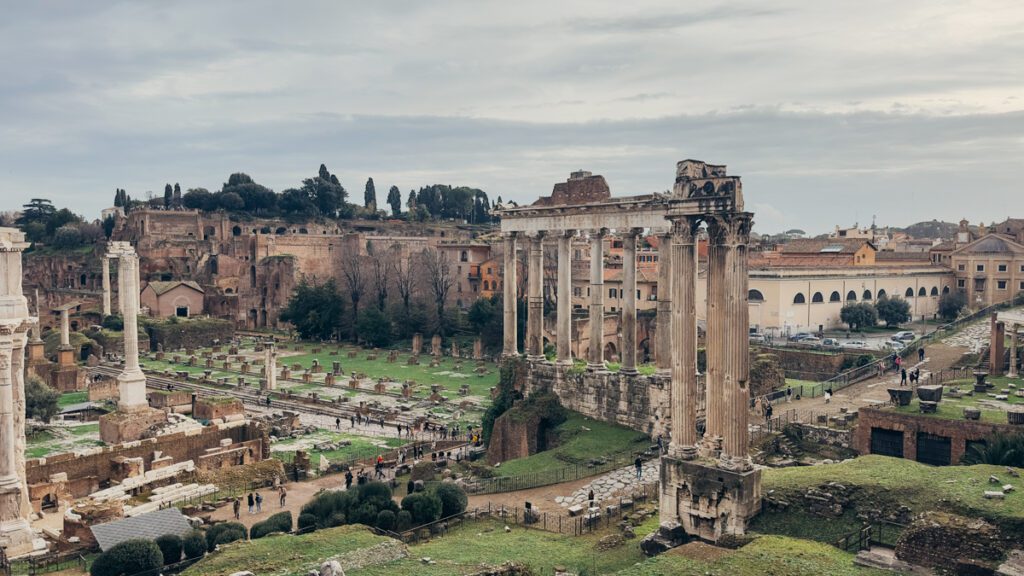
From the back of the Capitoline Museums, you can see a ton of the ruins, including the Septimius Severus Arch, Milliarium Aureum, Lapis Niger and the Temple of Vespasian and Titus.
If you’re planning on visiting the Colosseum, your entrance fee will cover the entrance to the Roman Forum (valid for 24h). But if you don’t have the time, or you don’t feel like exploring the whole site, this is a good option.
If you don’t want to pay for this attraction, that’s ok! We’re suckers for free things too! So this is a great option. Just watch out for the scammers on Via dei Fori Imperiali. But don’t worry, we’ve got your back for that too – read our article here.
INFORMATION ABOUT THE ROMAN FORUM & PALATINE HILL
Official site
Name in Italian: Foro Romano
Opening hours: Visible 24-7 if you’re viewing from the outside. Open every day, but hours vary by season. Check the official site for up to date info. Opening hour is at 9 am and it closes between 4:30 or 7 pm. Last admission is 1 hour before closing.
Ticket price: At the gate, you pay €16 (+ €2 if you purchase online). This is for the standard ticket that gives you access to the Roman Forum, Palatine Hill, and the Colosseum. You can also get the Full Experience ticket which includes a access to the Colosseum arena and underground area for €24. EU citizens aged 18-25 – €2. Free for anyone under 18 years old
Location: Check here on Google Maps. There are many entrances & exits. Foro Romano: Largo della Salara Vecchia, 5/6. Palatino: Via di San Gregorio, 30
Entrances: Arco di Tito, Varco Vignola in Via di San Gregorio, Largo della Salara Vecchia and Carcere Mamertino.
Exits: Largo della Salara Vecchia, Arco di Tito, Varco Vignola in Via di San Gregorio, Via Petroselli
Transportation: Metro: line B station Colosseo. Bus: n. 75, 81, 673, 175, 204. Tram: n. 30
3. Check out the Colosseum for free in Rome
Good news! The Colosseum is free to visit, on the First Sunday of the month. You just need to book your ticket. It’s on a first-come-first-served basis, but basically, you can grab your tickets at the ticket office in Piazza del Colosseo, located near the Temple of Venus and Rome.
If you’re visiting on any other day than the Free First Sunday, you need a ticket. And if you don’t want to pay the entrance fee, you can simply walk around the full circumference of this massive Wonder of the World and UNESCO World Heritage Site.
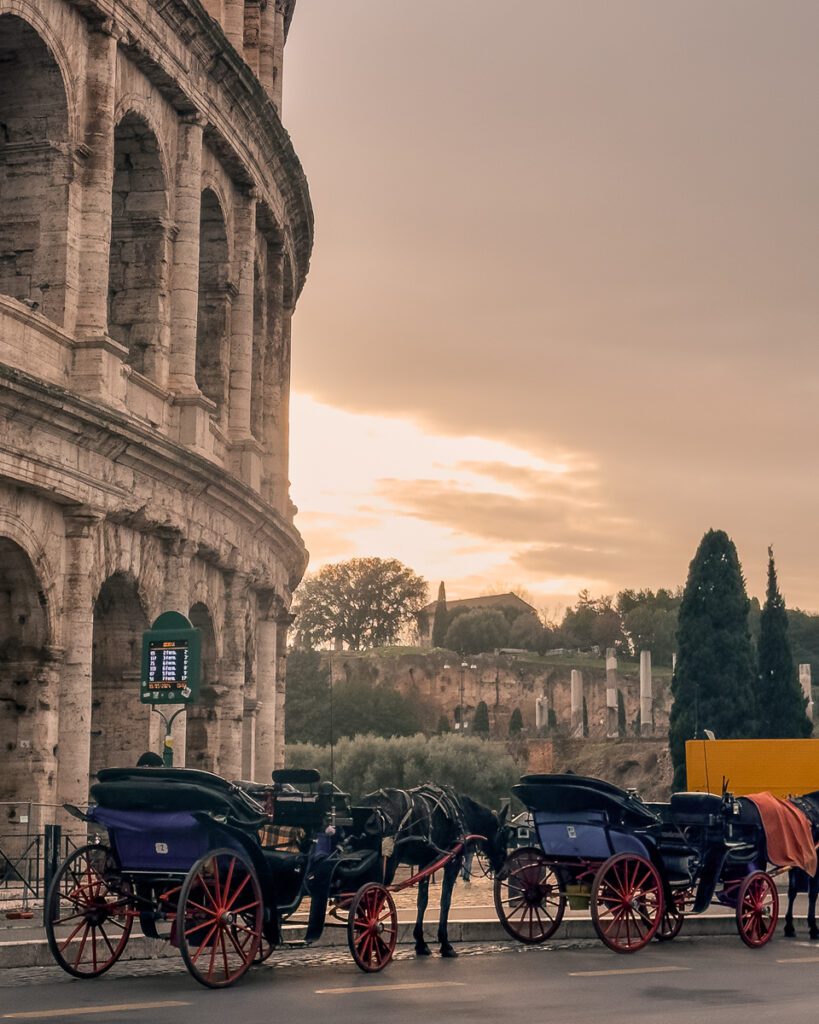
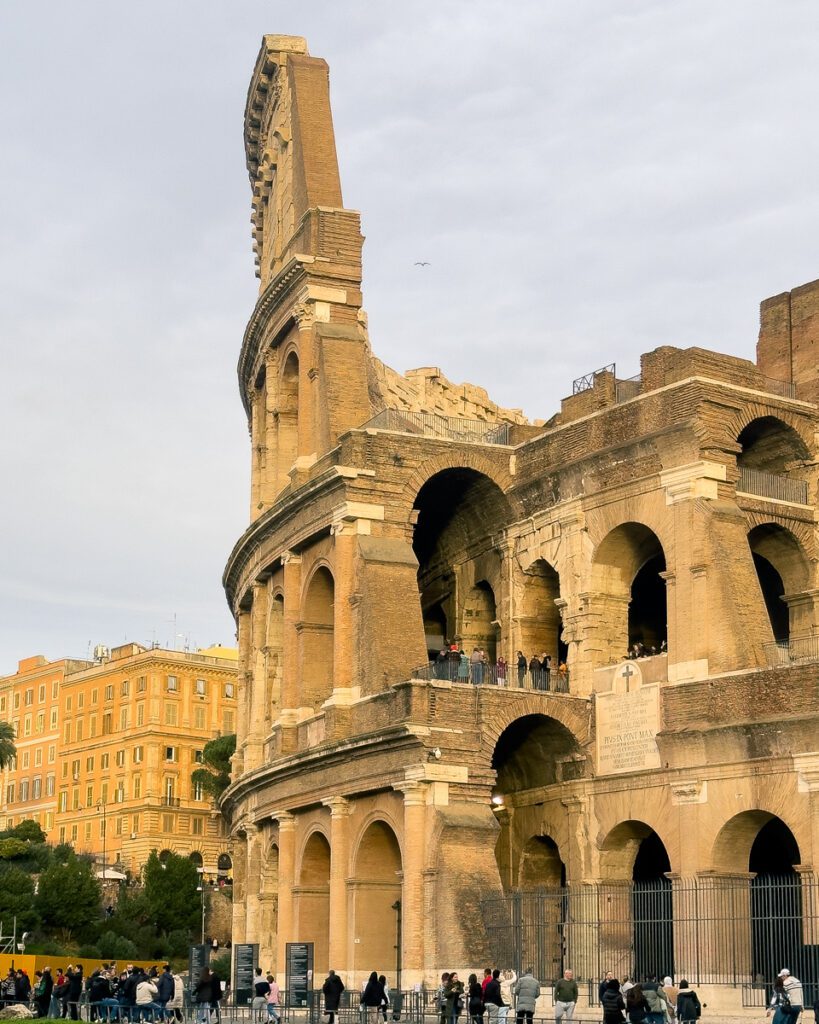
To this day, the Colosseum remains the world’s largest amphitheater. It was constructed between 72 and 80 AD and stands at an impressive height of 48 meters (157 feet) with a circumference of 545 meters (1,788 feet). To put this into perspective, it stands as tall as a 12-story building. During its peak, the Colosseum had the capacity to accommodate up to 80,000 spectators.
Sure, taking a look inside is 100 times more impressive. But for those who love photography and who don’t want to pay the 16 euros to get in, walking around this mammoth is just as amazing. Our tip would be to go before opening (at sunrise) or around sunset, to get the best light for your pictures, and you have the least amount of people.
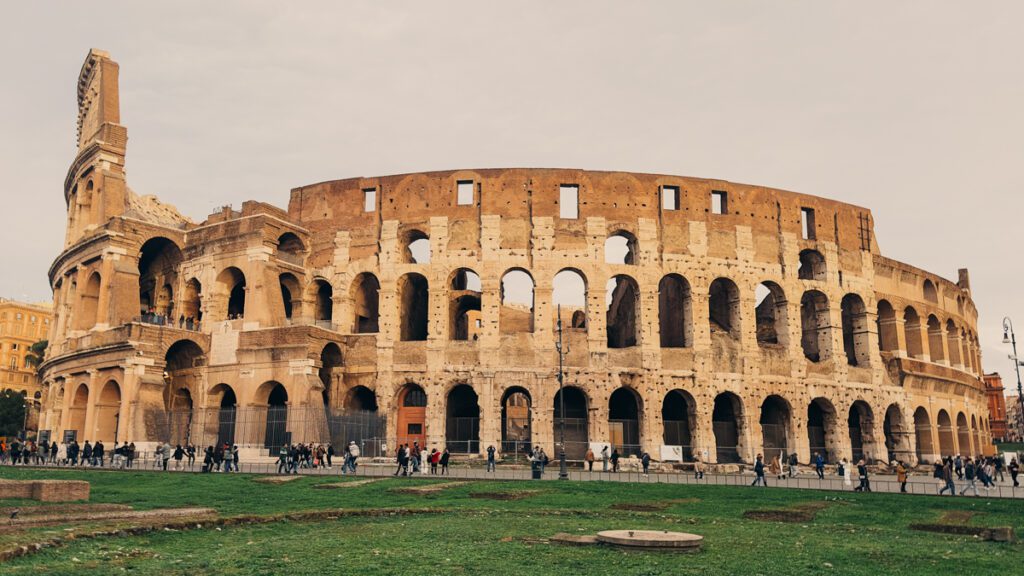
Extra tip for you: If you’re going to be spending money at one attraction, let the Colosseum be it! We recommend getting a guided tour. Not only will you skip the line, but you’ll also be able to visit the arena floor, the underground and the top level. Even better, get the Omnia 3-day pass and you can visit all the top attractions for free, on top of having access to the public transportation service.
INFORMATION ABOUT VISITING THE COLOSSEUM
Official site
Name in Italian: Colosseo
Opening hours: Open every day, but hours vary by season. Check the official site for up to date info. Opening hour is between 8:30 or 9 am and it closes between 4:30 or 7 pm. Last admission is 1 hour before closing.
Ticket price: At the gate, you pay €16 (+ €2 if you purchase online). This is for the standard ticket that gives you access to the Roman Forum, Palatine Hill, and the Colosseum. You can also get the Full Experience ticket which includes a access to the Colosseum arena and underground area for €24. EU citizens aged 18-25 – €2. Free for anyone under 18 years old
Location: Here on Google Maps. Piazza del Colosseo 1
Transportation: Metro: Line B, stop Colosseo. Bus: n. 75 – 81 – 673 – 175 – 204. Tram: n. 3
4. Walk around the Arch of Constantine without paying
Located just steps away from the Colosseum, the Arch of Constantine is a beautiful triumphal arch, and one of the many free things to see in Rome.
When looking at the Arch, you may feel a little underwhelmed, but having some background into it might make things a little more interesting. This arch stands to commemorate the victory of Emperor Constantine I at the Battle of Milvian Bridge in AD 312. This eventually led to Constantine’s rise to power as the sole ruler of the Roman Empire.
Constructed in AD 315, the Arch of Constantine is the largest of the three triumphal arches still preserved in Rome. It stands at about 21 meters (69 feet) and spans approximately 25.7 meters (84 feet) in width. It’s beautiful with its three archways.
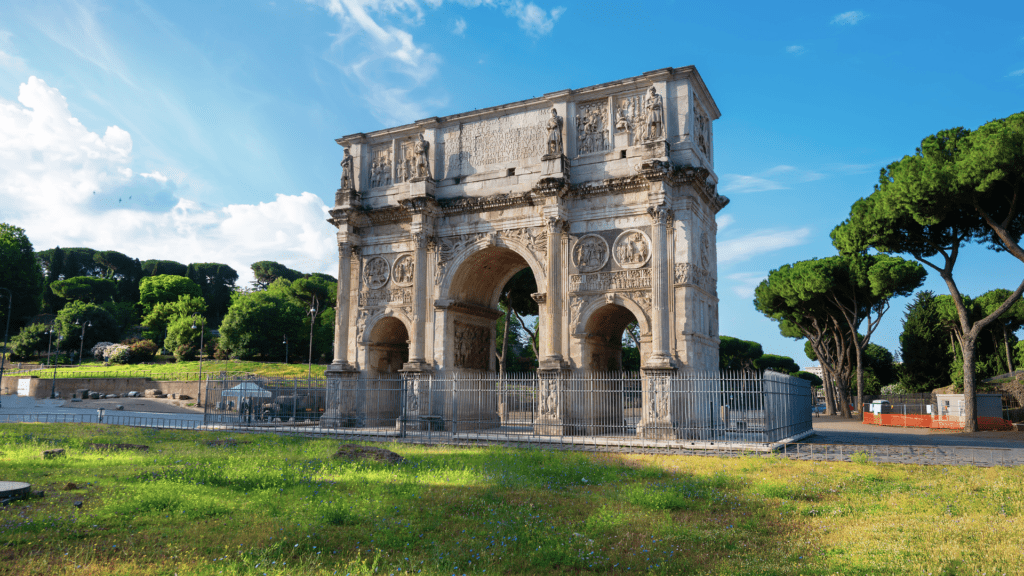
One of the most fascinating aspects of the Arch of Constantine is its decorative detailing, which includes a combination of original reliefs and spolia, or reused sculptures from earlier monuments. Many of these reliefs highlight scenes from Constantine’s military campaign and his triumphal entry into Rome. Some of the reliefs were even taken from monuments of earlier emperors, such as Trajan, Hadrian, and Marcus Aurelius, adding layers of historical and artistic significance to the arch.
Today, the Arch of Constantine remains one of the most iconic landmarks in Rome, attracting visitors from around the world who come to admire its grandeur and historical significance.
INFORMATION ABOUT THE ARCH OF CONSTANTINE
Official site
Name in Italian: Arco di Costantino
Opening hours: Open every day, 24-7.
Ticket price: Free to walk around
Location: Here on Google Maps
Transportation: Metro: Line B, stop Colosseo. Bus: n. 75 – 81 – 673 – 175 – 204. Tram: n. 3
5. Climb to the terrace of the Altar of the Fatherland, epic views for free in Rome
The Altar of the Fatherland, also known as the Monumento Nazionale a Vittorio Emanuele II (National Monument to Victor Emmanuel II), is a grandiose monument located in the heart of Rome. It’s one of the most beautiful buildings in Rome, on top of being Derek’s all-time favorite structure (apart from the Colosseum). It’s also one of the best places to catch a view of Rome for free!
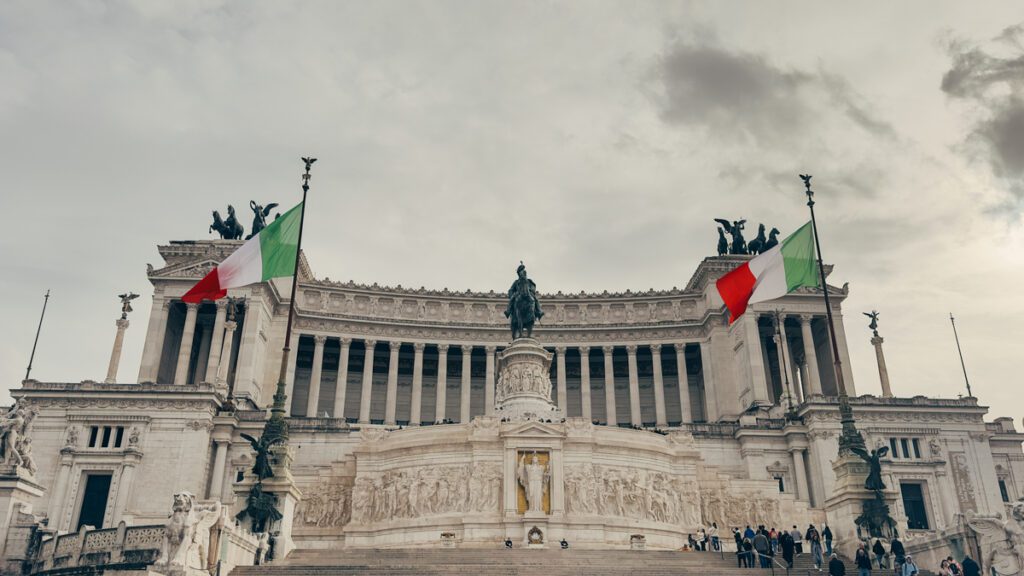
Although beautiful, the Altar of the Fatherland has been a subject of debate because of its controversial architectural style and its impact on the surrounding historic landscape. Sitting next to other iconic buildings like Capitoline Hill, at the heart of Piazza Venezia. It’s still one of Rome’s most iconic landmarks in Rome and a symbol of Italian national identity.
The building was erected to honor Victor Emmanuel II, the first king of unified Italy, and to commemorate the country’s unification process, known as the Risorgimento. It’s also where you can find the tomb of the unknown soldier
Although you need to pay to visit the museums and take the elevator all the way up to the top of the building, you can gain access to the 2 free terraces. During opening hours, you can climb the stairs and get 360 views of the city. If you can make it in time for sunset, that’s even better as you’ll see Rome in all its glory!
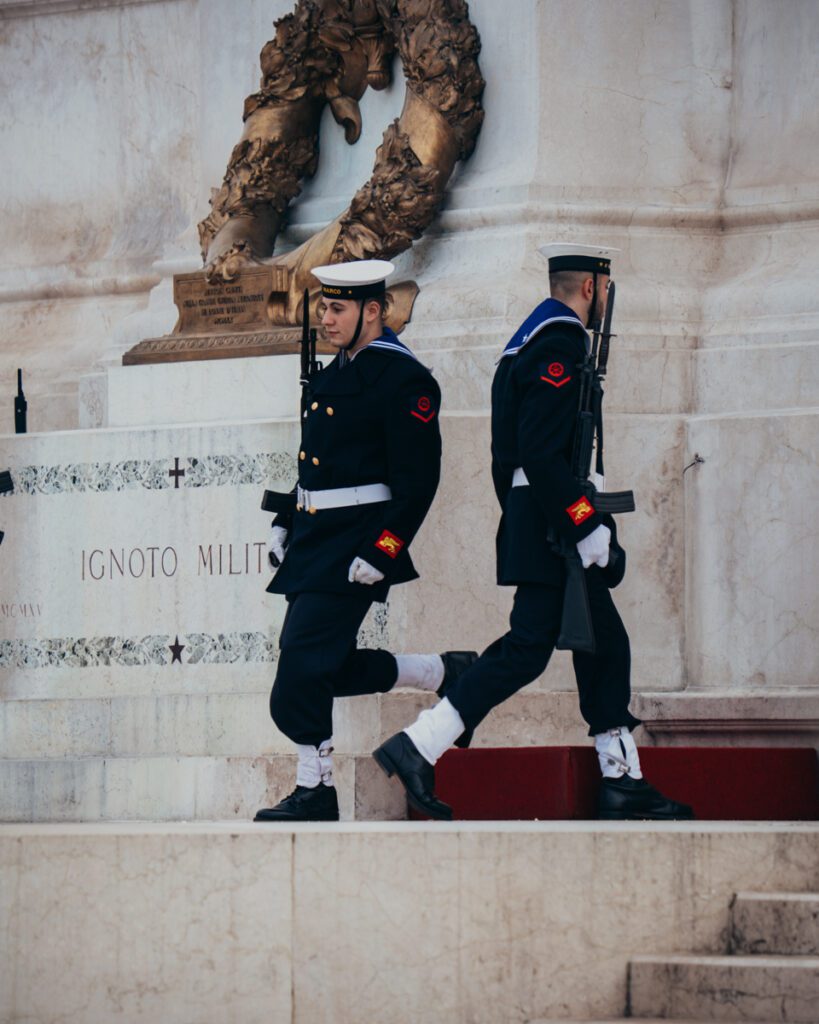
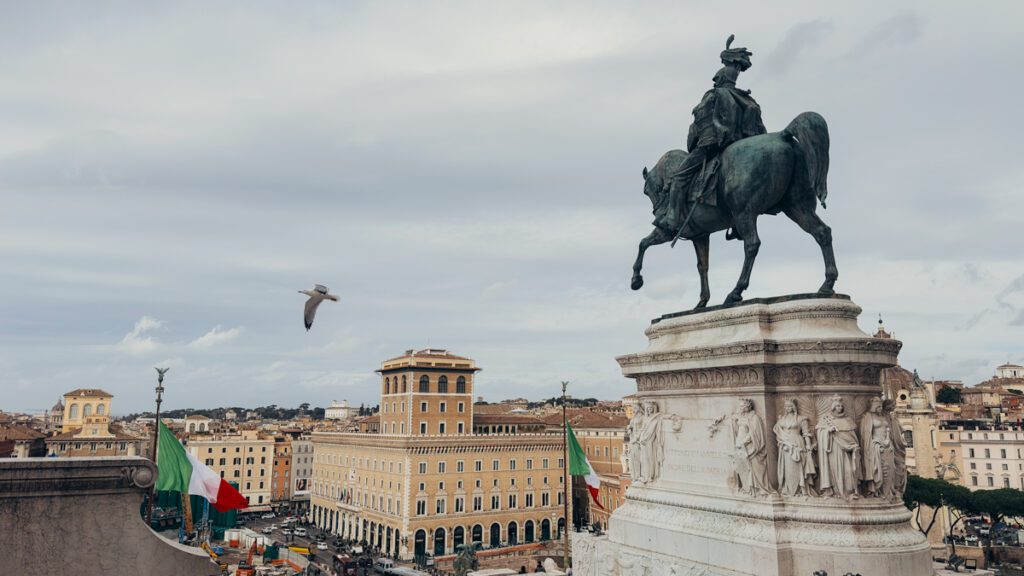
Extra tip: Every hour on the hour, there is a changing of the guards. It’s a really great little moment to observe if you can time your arrival with that. Just another great free thing to do in Rome!
INFORMATION ABOUT THE ALTAR OF THE FATHERLAND
Official site
Name in Italian: Altare della Patria
Opening hours: Open from Monday to Sunday from 9:30 am to 7:30 pm (last entry at 6:45 pm). Every Friday and Saturday until September 16, from 7:30 to 10:30 p.m. (last admission 9:45 pm). From July, the Vittoriano and the Panoramic Terrace, extend opening hours from 7:30 pm to 10:30 pm, with last admission at 9.45 pm.
Ticket price: Free to climb up to the 2 lower terrasses. €17 for the museums and the elevator. Tickets allows access to all the sites and are valid for seven days from that issue. Admission is free on the first Sunday of the month
Location: Check here on Google Maps. Piazza San Marco, 49
6. Piazza del Campidoglio, view one of Michelangelo’s masterpieces for free in Rome
Located steps from the Altar of the Fatherland, Piazza del Campidoglio, or Capitoline Hill Square, is a beautiful and historic public square located atop Capitoline Hill in Rome. This is the smallest of the Seven Hills of Rome.
It’s also one of the few places where you can see Michelangelo’s designs for free. Created in the 16th century, it stands as a masterpiece of Renaissance urban planning. The square is surrounded by three palaces: Palazzo Senatorio, Palazzo dei Conservatori, and Palazzo Nuovo. These buildings house the Capitoline Museums, which feature a remarkable collection of classical sculptures, ancient artifacts, and Renaissance paintings. They are not free to visit, but you can sneak a peek through the doors.
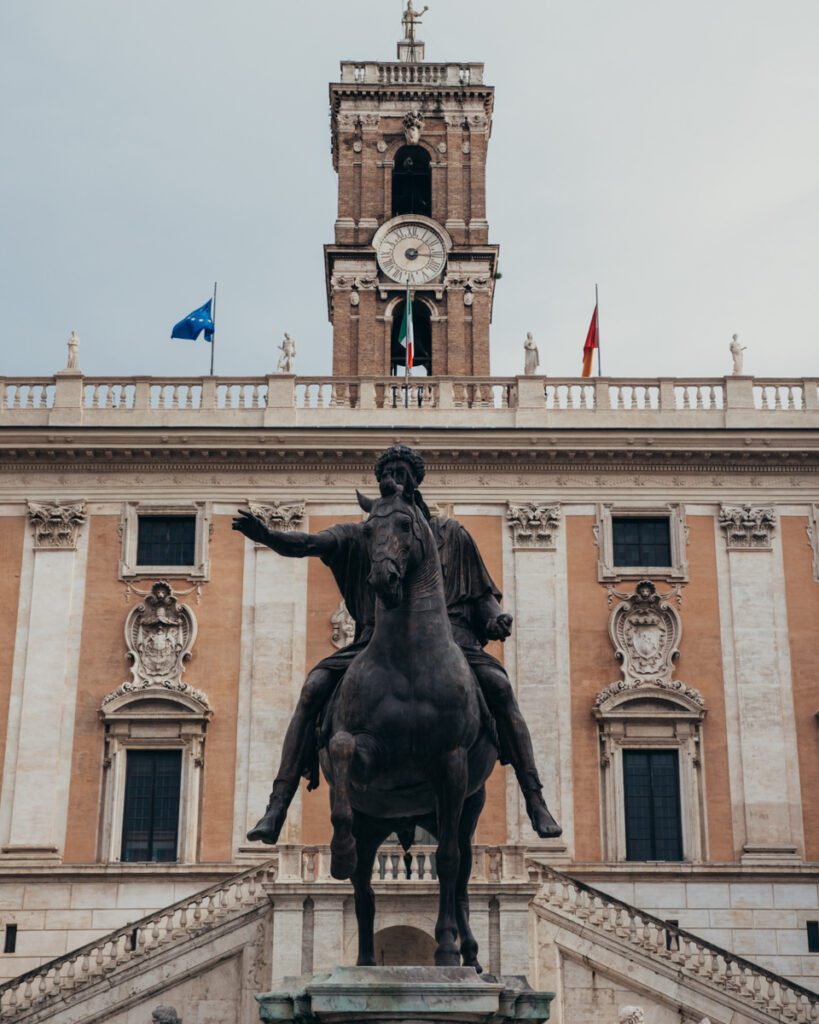
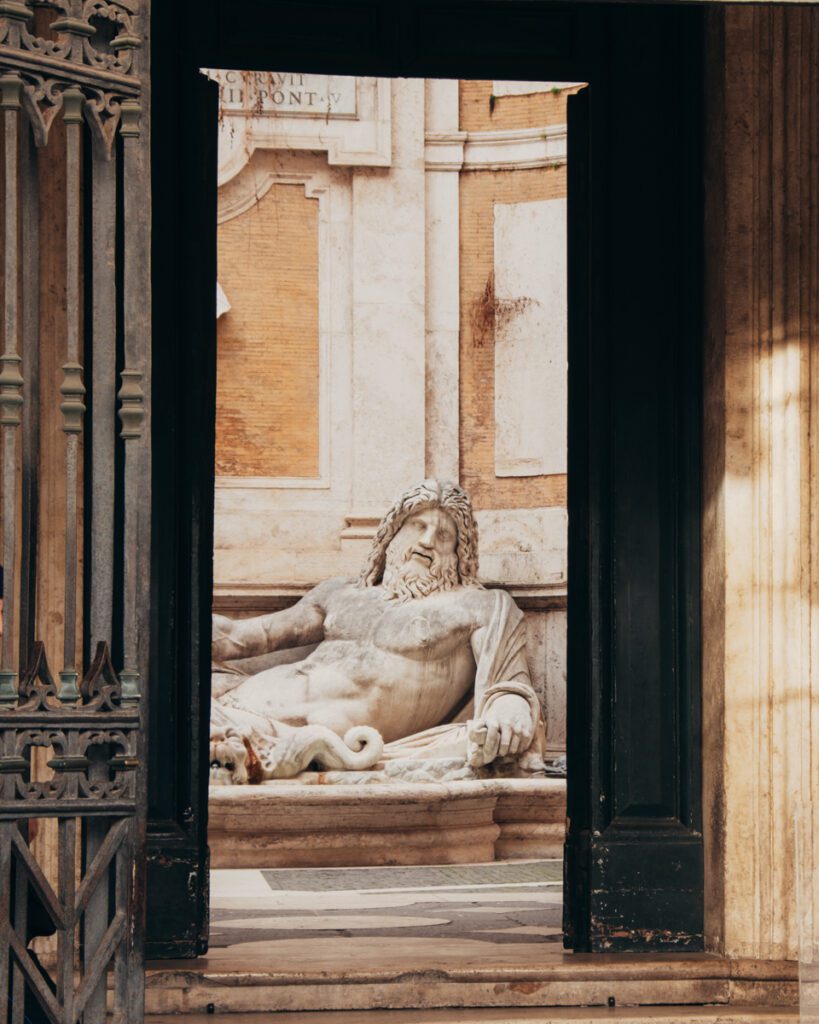
In the center of Piazza del Campidoglio stands a bronze statue of Emperor Marcus Aurelius on horseback, a replica of the original statue which is now housed in the Capitoline Museums. The statue serves as a symbol of Rome’s ancient heritage and its connection to the classical world.
The square is another place where you can catch amazing views of Rome. Also, at the back of Capitoline Hill, you have a higher vantage point of the Foro Romano, the Roman Forum. It’s also a great place to catch views of the Colosseum.
Extra tip: In the winter, the piazza is decorated with lights and decorations, giving it a really beautiful Christmas feel. Well worth climbing up the stairs to take in the view here, if you’re visiting during the Holiday season.
INFORMATION ABOUT CAPITOLINE HILL
Official Site (for the museums)
Name in Italian: Campidoglio
Opening hours: The Piazza is always open. The museum hours are: Everyday 9:30 am to 7:30 pm. Last admission one hour before closing time. Closed on May 1st and December 25th. Some hours vary on special Holidays.
Ticket price: Free to walk the Piazza. Museum tickets vary from €11 to €26.50, depending on what you want to see
Location: Check here on Google Maps.
7. Walk down the historic Via Dei Fori Imperiali for a free Rome open-air museum tour
Taking a stroll down Via Dei Fori Imperiali is like taking a free tour of an amazing open-air museum. Lined by historic monuments, bathing in the sounds of street performers, it’s one of the best free things to do in Rome.
Via dei Fori Imperiali is a grand boulevard that cuts through the heart of the ancient part of Rome. On either side, you have the ruins of some of the most important imperial forums and archaeological sites in the city. On one side, you can see the Roman Forum. On the other, you have the Forums of Augustus and Trajan. From here, you can also see the Colosseum. These iconic landmarks provide a breathtaking backdrop as you explore this bustling street.
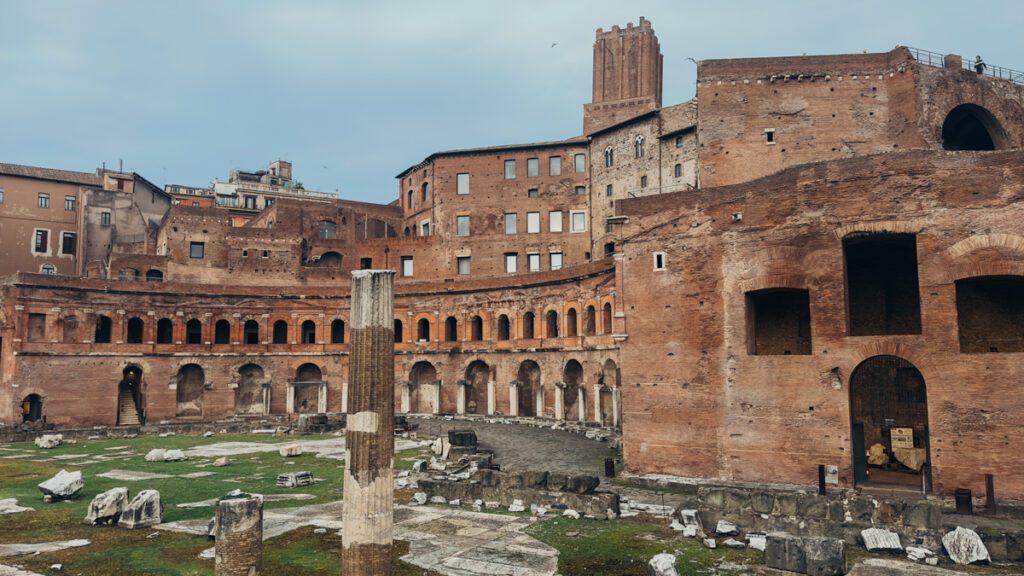
What makes this street a little more magical is the entertainment here. If you don’t stop and admire the street performers, you can add it to the list of the free things to do in Rome. However, we recommend having a bit of spare change to thank these performers. Remember, if you take a picture or video of them, or stop to enjoy their art, please leave them a small tip.
Extra tip: On Sundays, the Via dei Fori Imperiali is closed to street traffic. This means you can walk on the street from Plaza Venezia all the way to the Colosseum. Take your time and enjoy everything it has to offer. It’s a beautiful experience to be car-free!
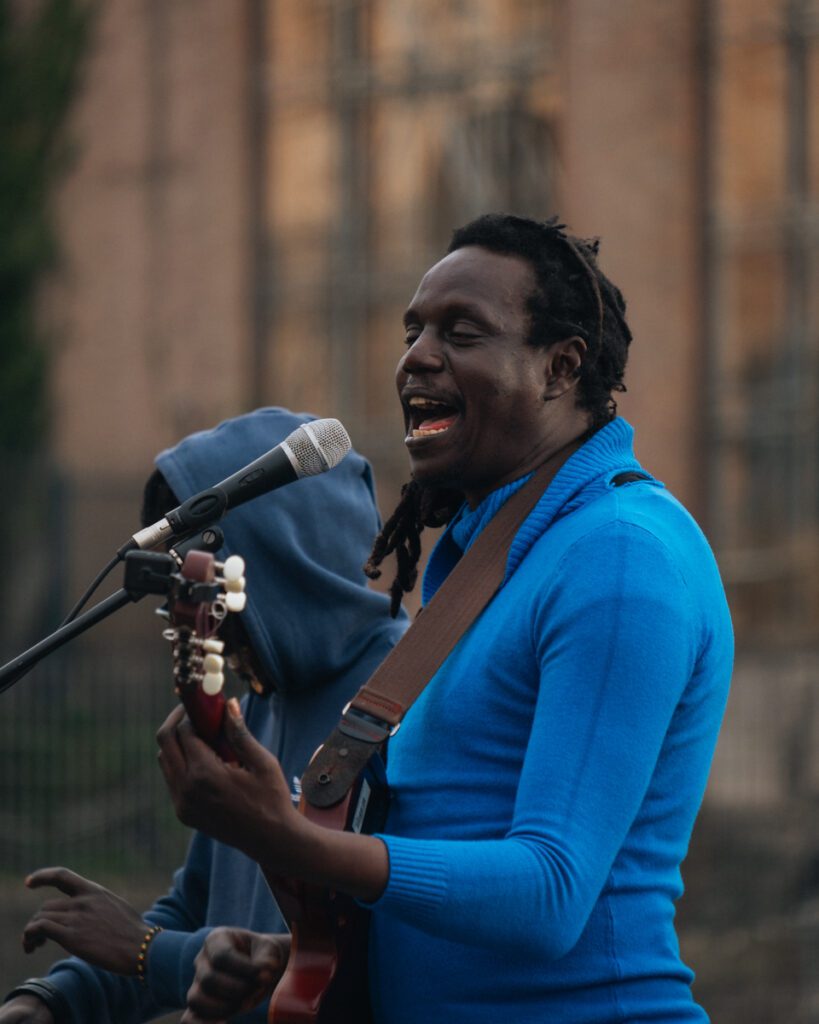
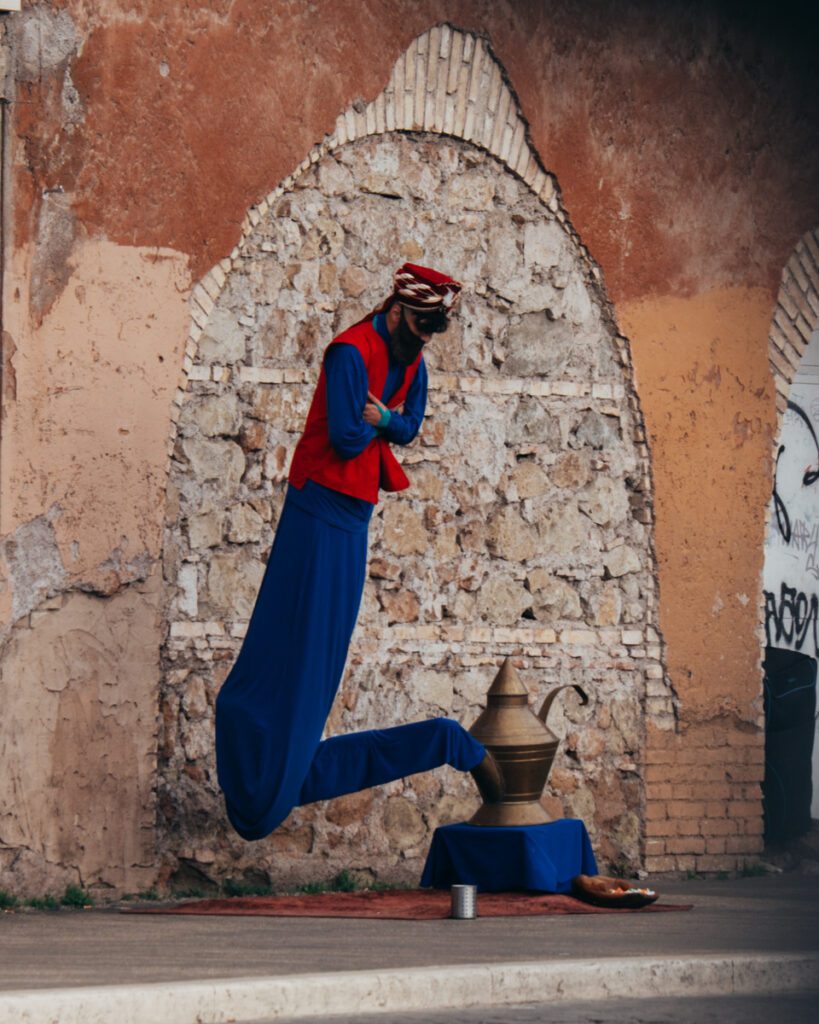
Bonus tip: Via dei Fori Imperiali is one of the busiest and most touristic streets in Rome. As such, it’s teaming with scammers and pickpockets. Always look out for your belongings, and watch out for the ‘free bracelet’ scam. Read more about those two here.
INFORMATION ABOUT VIA DEI FORI IMPERIALI
There is no official site
Name in Italian: Via dei Fori Imperiali. Foro di Augusto. Foro di Traiana
Opening hours: You can walk along the street at any time in the day or night. At night, the forums are illuminated which give it a different look completely.
Ticket price: Free to walk the street.
Location: Check here on Google Maps.
8. Trevi Fountain, one of the top free attractions in Rome
Ok, so here’s the deal – the Trevi Fountain is breathtaking and definitely worth checking out during your three-day trip to Rome. But, a quick heads up, it’s pretty freakin’ popular and gets super crowded. We recommend making a quick stop to see it and secure your return, but that’s about it. If you want to avoid the crowds, your best bet is to visit at the crack of dawn, or really late at night!
Did you know that the Trevi Fountain is a stunning Baroque masterpiece situated in the heart of Rome? This iconic monument is famous for its grandeur and intricate sculptures and is regarded as one of the most renowned fountains globally. The fountain was designed by architect Nicola Salvi and completed by Pietro Bracci.
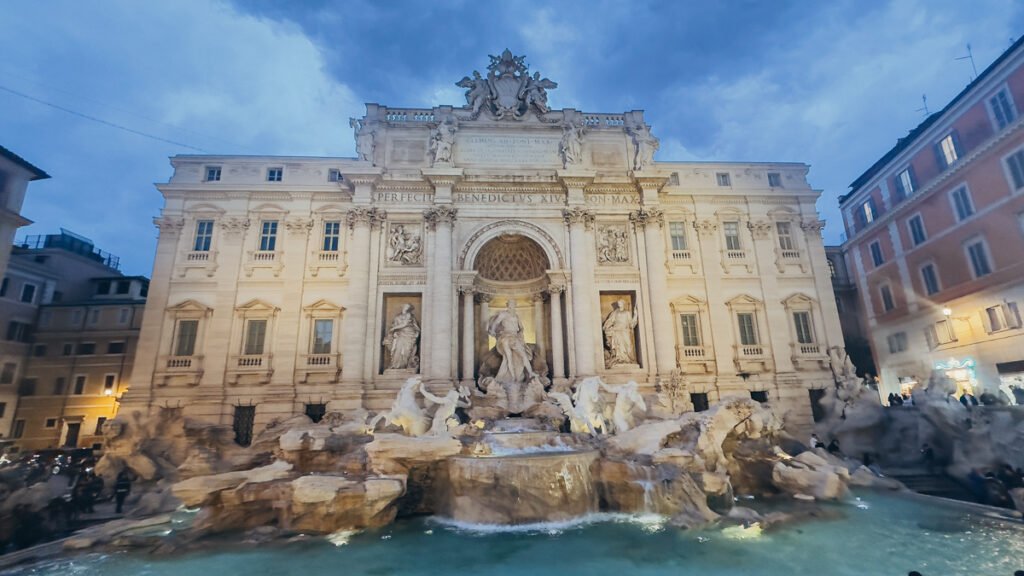
There are 2 traditions that you can partake in during your visit to the Trevi Fountain. One of them is free, while the other requires you to use a coin… but luckily, it can be any denomination.
The most popular tradition at the Trevi Fountain is to throw a coin in. Rumor has it that you have to toss a coin with your right hand, over your left shoulder while your back is turned to the fountain. Legend says it guarantees a return to Rome! Even if you don’t come back, it’s ok, because the coin you toss will go to a good cause. Over €3,000 are collected daily from the Fountain. They help fund social programs and are donated to local charities.
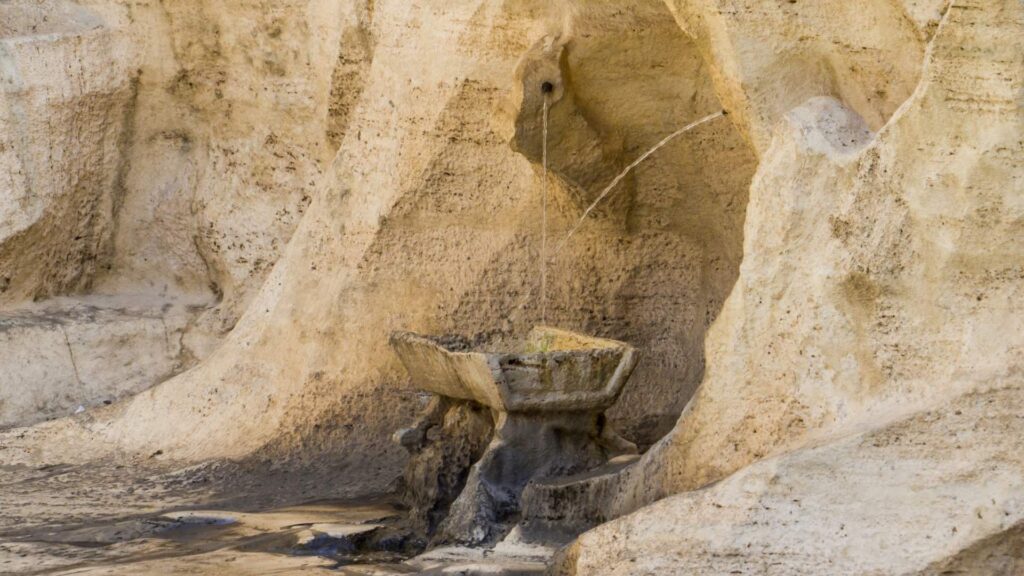
There is a lesser-known tradition associated with the fountain. To the right of the main fountain, there is a small rectangular basin that has two small spouts. This is called the Fountain of Lovers. According to legend, couples who drink water from this fountain together will stay in love forever and remain loyal to each other.
Again, the Trevi Fountain is one of the most popular attractions to visit in Rome. The fact that it’s free might have something to do with it! Either way, be careful with your belongings here. It’s always super busy.
INFORMATION ABOUT THE TREVI FOUNTAIN
Official Site
Name in Italian: Fontana di Trevi
Opening hours: Open 24-7
Ticket price: There are no tickets required to visit this site. But you can visit it on a guided tour.
Location: Check here on Google Maps.
9. Galleria Sciarra, a free hidden gem in Rome
What’s great about the Galleria Sciarra is that it’s relatively unknown for tourists visiting Rome. And it’s only a few steps from the Trevi Fountain. Some people (us included) stumble upon it without knowing what it is.
In fact, we only realized we had discovered this beauty after asking our blogger friends to help us create an article about the best hidden gems in Rome. And it popped up as one of the recommendations. We wholeheartedly agree that it’s worth exploring.
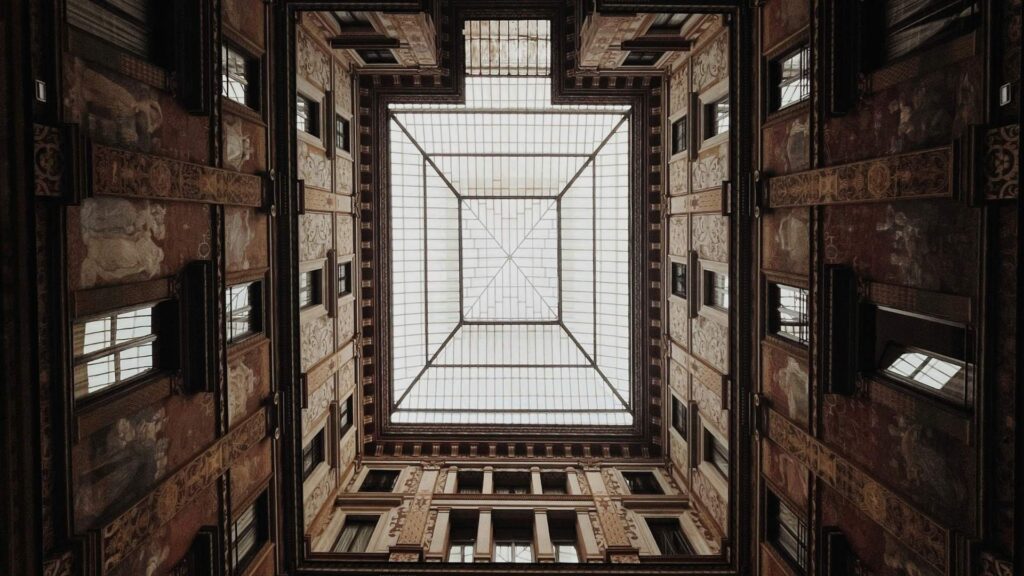
Galleria Sciarra, also known as Palazzo Sciarra, is a stunning example of Art Nouveau architecture and decoration. It was constructed in the late 19th century, designed by the architect Giulio De Angelis and decorated by the renowned artist Giuseppe Cellini. The gallery was commissioned by the Sciarra family, who were prominent Roman nobles. It was an extension of their palace.
What makes Galleria Sciarra special is its intricate and colorful frescoes that depict allegorical and mythological scenes. These stunning artworks create an enchanting atmosphere, a little haven of peace amongst the hustle and bustle of the city around (especially with all the iconic landmarks nearby).
The gallery is typically open to the public during daylight hours, allowing visitors to admire its beauty free of charge. If you’re visiting the Trevi Fountain, we highly recommend you stop by here too.
MORE INFORMATION ABOUT GALLERIA SCIARRA
Official Tourism Site
Name in Italian: Galleria Sciarra
Opening Hours: Mon-Tue 10am-8pm. Closed December 25th. But it seems to be open all the time as it’s a passageway
Location: Find it here on Google Maps
10. Spanish Steps, another iconic landmark in Rome you can visit for free
How amazing is it that most of the famous attractions in Rome are free?! Here’s another to add to the list – The Spanish Steps! Known for their grandeur and architectural beauty the steps consist of 135 steps leading from the Piazza di Spagna to the Trinità dei Monti church at the top. It’s another great place to get a view of Rome from above!
From the top of the steps of the Trinità dei Monti church, you can get a view of the charming Piazza di Spagna, the bustling (and very expensive) Via dei Condotti, and the historic buildings that line the streets of Rome.
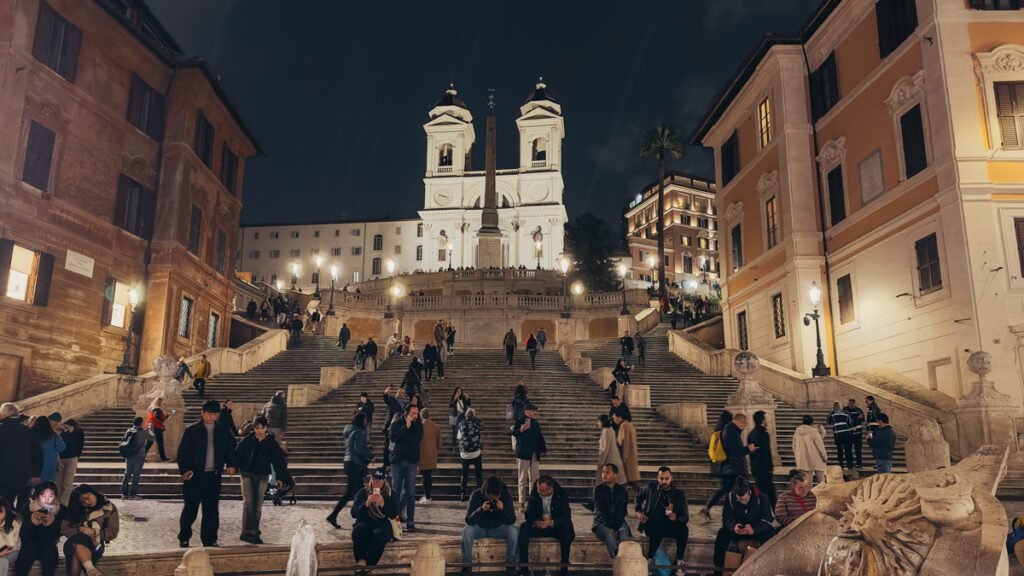
The Spanish Steps have played a significant role in Rome’s history and cultural life. They were commissioned by Pope Benedict XIII in the early 18th century to link the Spanish Embassy to the Trinità dei Monti church, and they have since become a symbol of the city’s Baroque architecture and artistic heritage. What’s interesting, however, is that most of the funding to build the Spanish Steps has come from France.
Although the Steps are free to roam about, don’t sit on them. As of 2019, you can no longer do that. They are designated as a UNESCO Heritage Site, and you can also get fined up to €400 if you’ve dirtied or damaged the steps in any way. Save that money, and go shopping at one of the luxury stores at the foot of the Steps instead. With all these free things to do in Rome, might as well spend some of your money on the finer things in life. If it’s not shopping for you, then make it gelato and pasta!
INFORMATION ABOUT THE SPANISH STEPS
No official site
Name in Italian: Scalinata di Trinità dei Monti
Opening hours: Open every day, 24-7
Location: Check here on Google Maps.
Transport: Metro Line A. Spagna Stop
11. Piazza Navona, soak in the atmosphere for free
Another iconic landmark that is free! We love this city for how budget-friendly it can be… unless you’re like us and you spend all your money on food! If so, Piazza Navona is a great place to enjoy it!
Piazza Navona is one of the most iconic squares in Rome, known for its stunning Baroque architecture and historical significance. The square stands on the site of the ancient Stadium of Domitian and retains its original elongated shape.
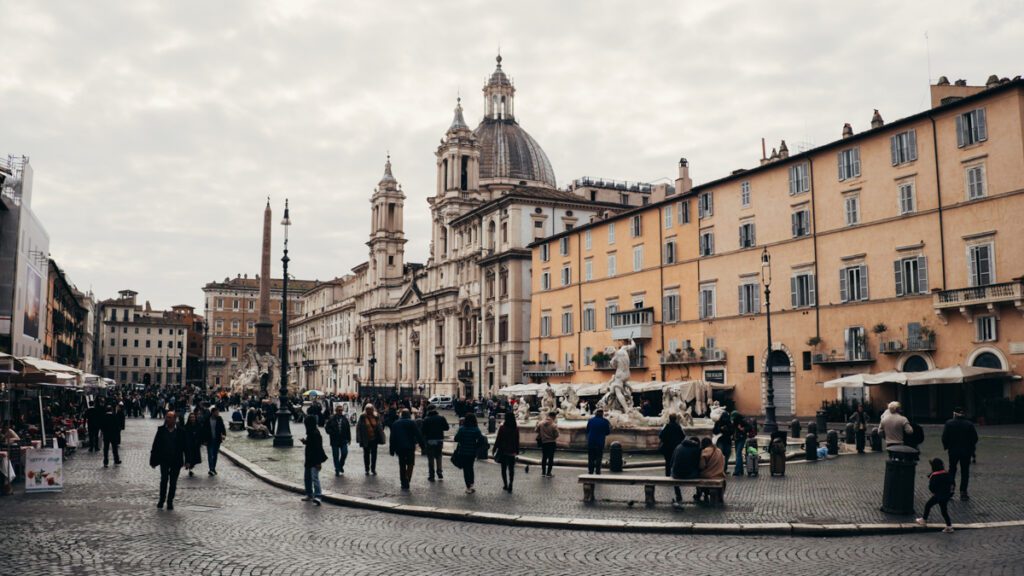
In the heart of the square, and on either extremity, you have 3 different fountains to admire. the highlight of Piazza Navona is the central Fountain of the Four Rivers, designed by the famous sculptor Bernini. This masterpiece features four river gods representing the major rivers of the continents known at the time: the Nile, Ganges, Danube, and Río de la Plata. On the extremities, you have the Fountain of the Moor and the Fountain of Neptune.
What makes Piazza Navona so amazing is that it’s a bustling hub of activity. You can admire street performers, artists, and vendors, all adding to its vibrant atmosphere. You can enjoy live music, caricature artists, and other performances free of charge while exploring the square and its surroundings. But as always, if you stop and admire their art, leave them a little tip. It’s only fair!
If you want to soak in the Roman atmosphere, this is a great place to do it. Just bring a snack, grab a seat and enjoy! As with all bustling squares, watch out for your belongings.
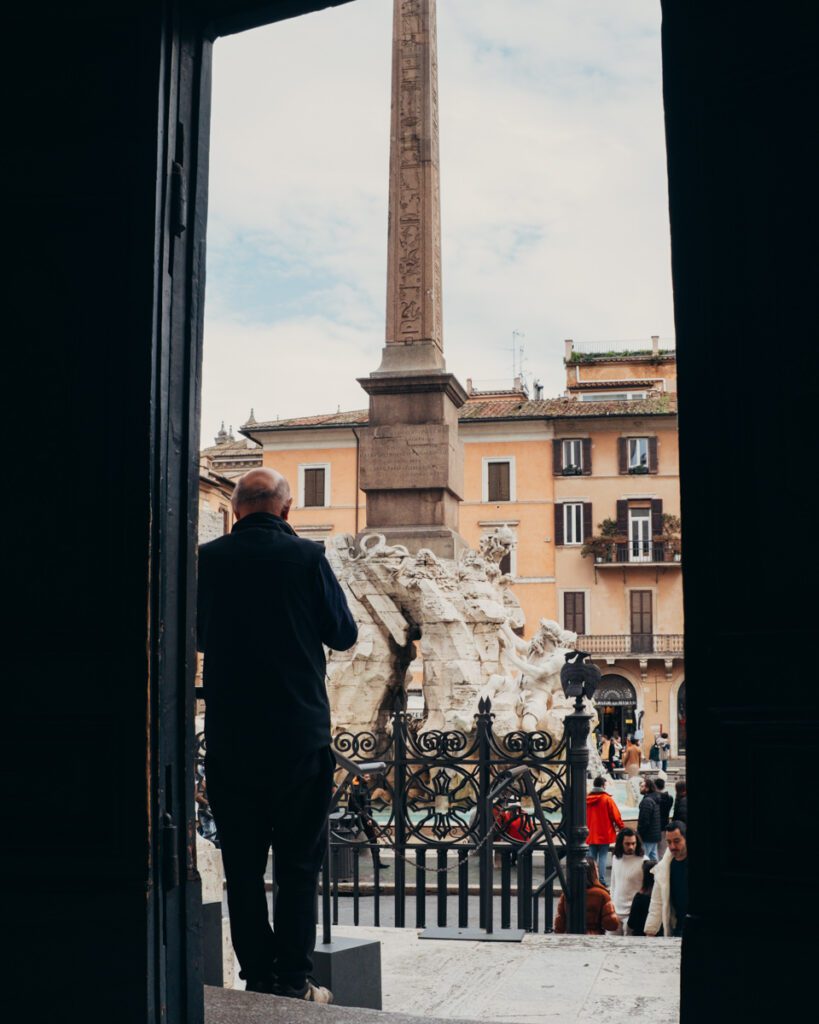
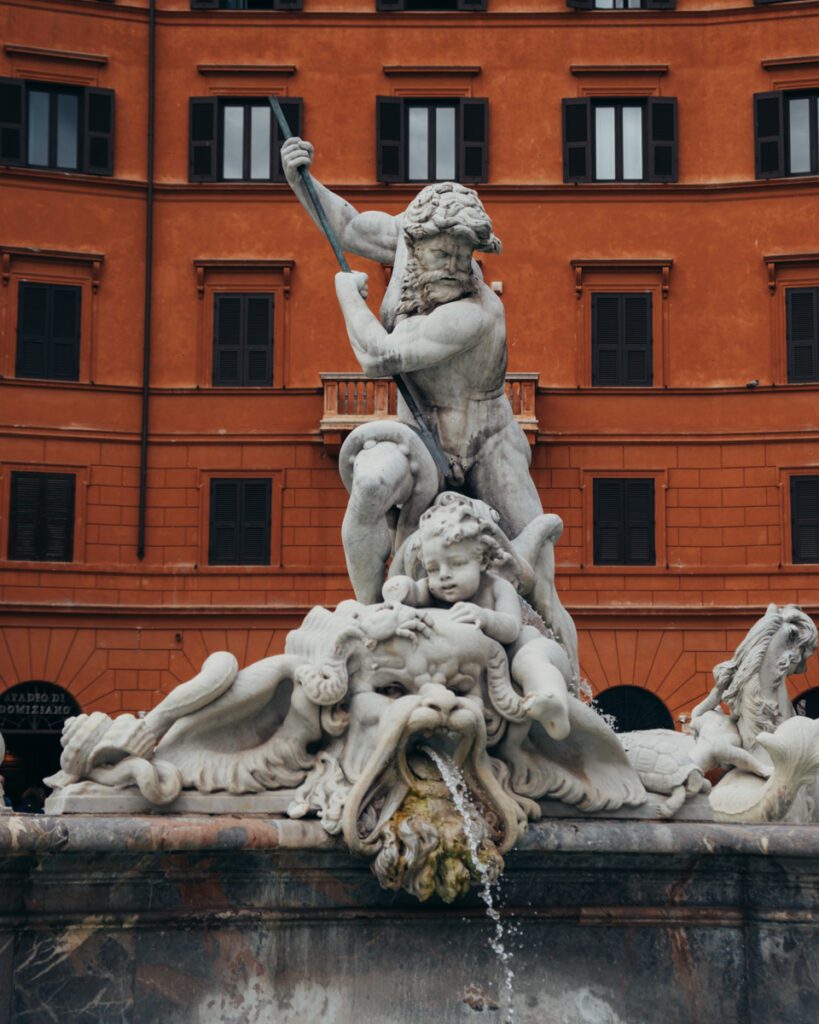
Extra tip: Most of the cafés and restaurants around the Piazza are tourist traps. Unless you’re stopping in for a coffee, a glass of wine or a gelato, they’re not worth the price tag of having to sit in the heart of the square. Instead recommend bringing your own snacks (there are great markets where you can grab them) and enjoying them on the many benches around.
Bonus tip: It’s not free, but if you want to enjoy an amazing drink with epic views, check out Terrazza Borromini’s ‘La Grande Bellezza’, the exquisite rooftop bar on the sixth floor of Hotel Eitch Borromini. It is one of the best hidden gems in Rome. Here, you can get a 360-degree view of Rome’s skyline. It’s not too far from Piazza Navona.
INFORMATION ABOUT THE PIAZZA NAVONA
No official site
Name in Italian: Piazza Navona
Opening hours: Open every day, 24-7
Location: Check here on Google Maps.
12. Castel Sant’Angelo, a beautiful landmark to discover for free
The Castel Sant’Angelo is another of the places you can discover for free on the First Sunday of the month. But there is a paid entrance if you visit on any other day. However, you can still enjoy it for free on the outside.
In fact, we didn’t visit the Castel from the inside during our 3 days in Rome, but we still managed to soak in all its beauty. Day or night, the Castel is really beautiful to admire. The contrast between how it looks during those two different times is stunning.
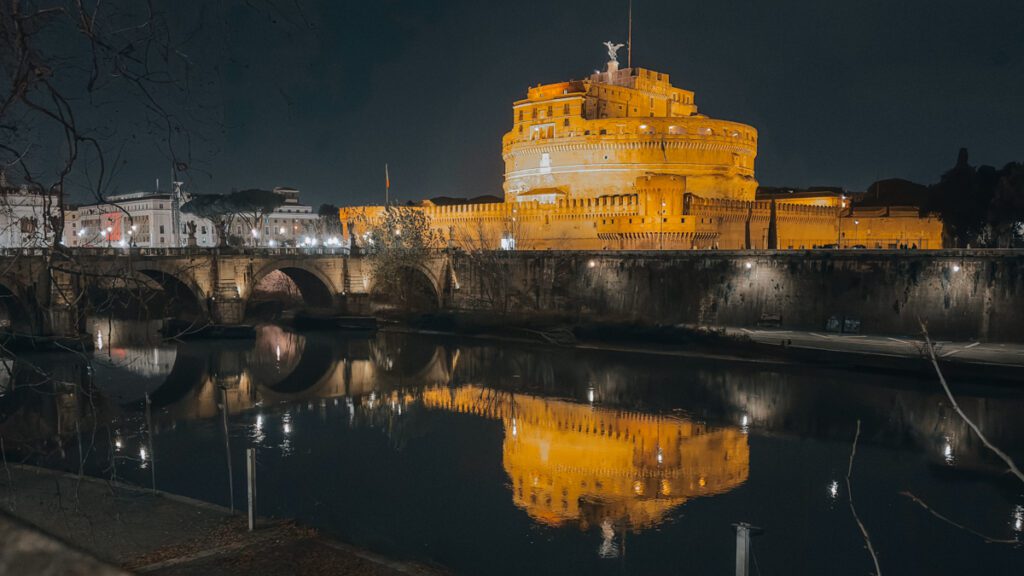
Initially, the Castel Sant’Angelo was built as a mausoleum for Emperor Hadrian in the 2nd century AD. Later, it served so many other purposes, including being a fortress and papal residence. In fact, one of its unique features is the Passetto di Borgo. This is a fortified corridor that connects the castle to Vatican City. It served as an escape route for popes during times of danger.
What’s also beautiful to admire is the Sant’Angleo Brige right in front of the Castel. Adorned with statues of angels, it’s a delight to walk on.
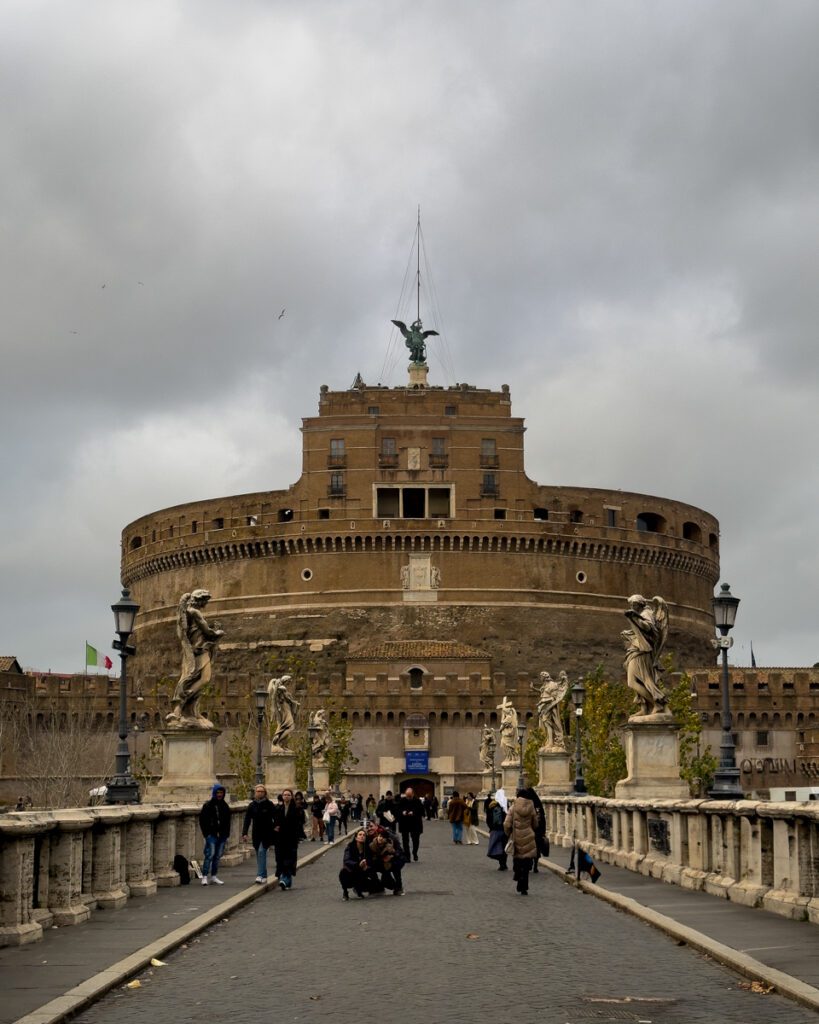
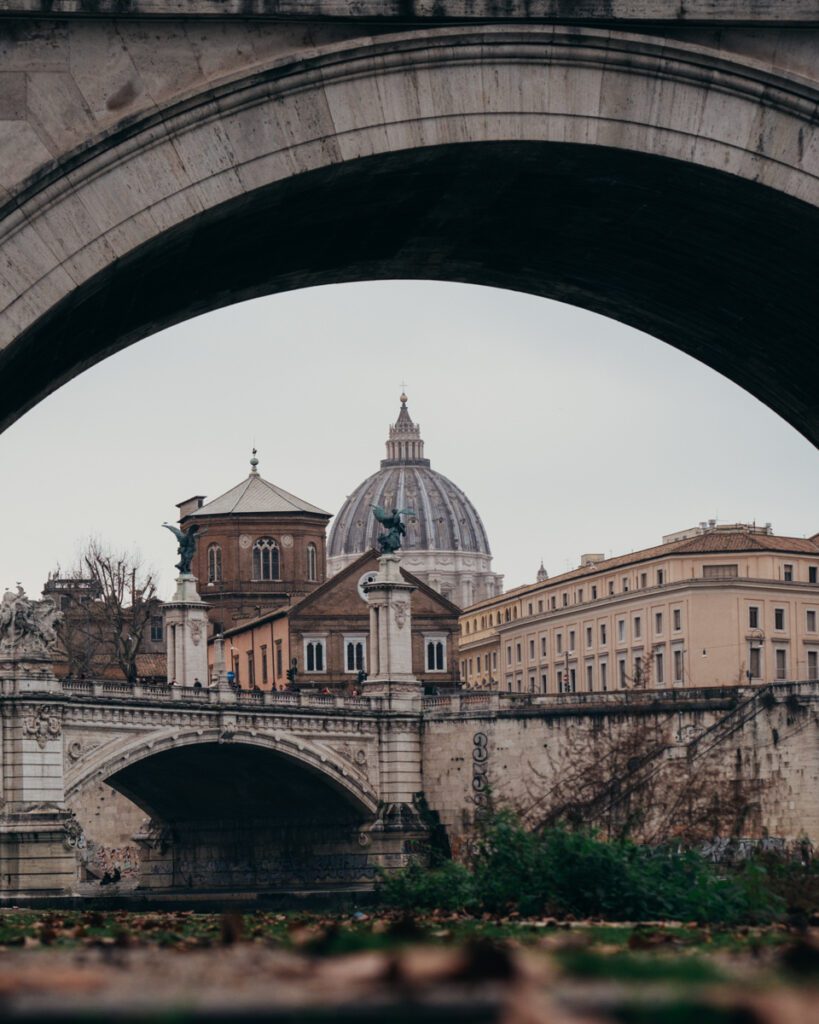
For photography lovers, you can get creative at the Castel. There are so many different viewpoints and landmarks you can explore. From the bridge, you can use the iron rods to frame St. Peter’s Basilica. From below the bridge, you can capture a different vantage point of the same Basilica or the Castel.
INFORMATION ABOUT THE CASTEL SANT’ANGELO
Official site
Name in Italian: Castel Sant’Angelo
Opening hours: Open from Tuesday to Sunday, 9 am to 7:30 pm. Last entry is 6:30 pm. Closed on Mondays, December 25th and January 1st.
Ticket price: €13 full price + exhibition entry: €6.50. €2.00 reduced (European Union citizens between 18 and 25 years old) + Exhibition entry: €2.00. Free: children under 18.
Location: Check here on Google Maps.
Free activities in Rome
What’s amazing about Rome is that not only are there beautiful landmarks you can admire for free, but there are also a ton of free activities all over the city. So whether you’re coming for 3 days or longer, you can always find something free to do in Rome.
Of course, our favorite free activity in Rome was to walk around. For us, it’s the best way to discover the city, take in the sites, and to discover the best hidden gems all over the place. It’s also the perfect way to burn off the calories of all the food we ate here!
So here are all the best free activities you can do in Rome
13. Go on a free walking tour in Rome
Like we said, we walked a ton while we were in Rome. Over 25,000 steps a day! And since this wasn’t our first time in the city, we knew where to go. But if this is your first visit to Rome, there are a few ways you can enjoy the walk.
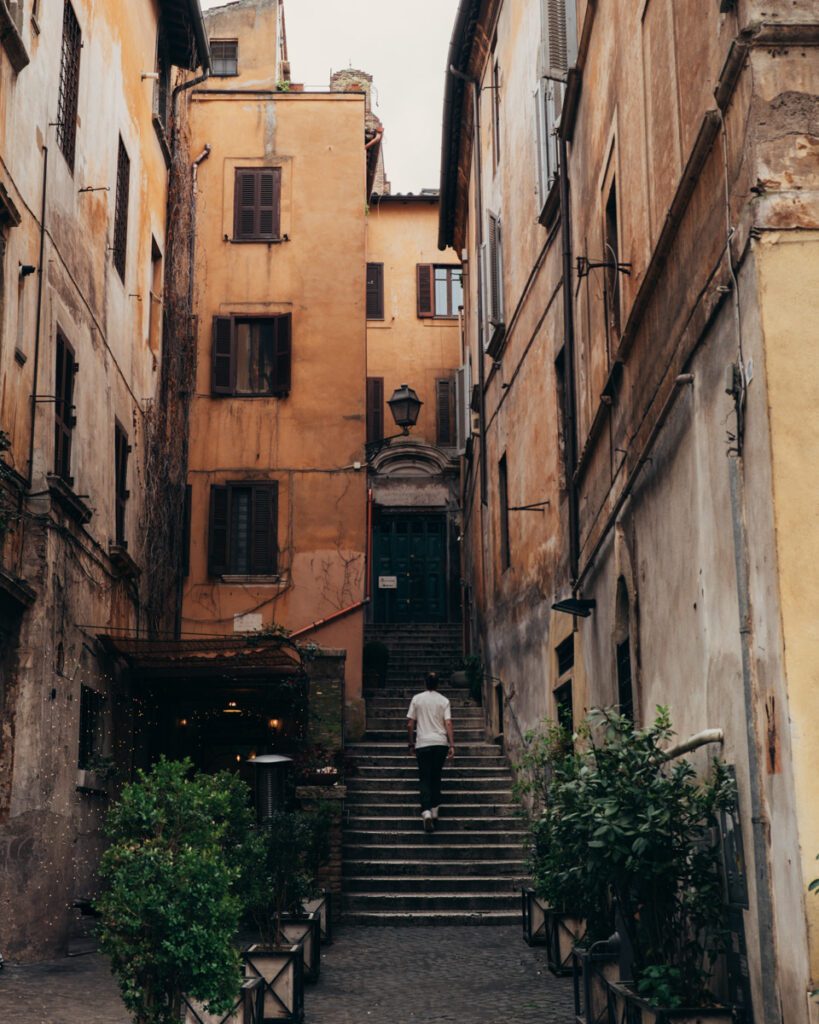
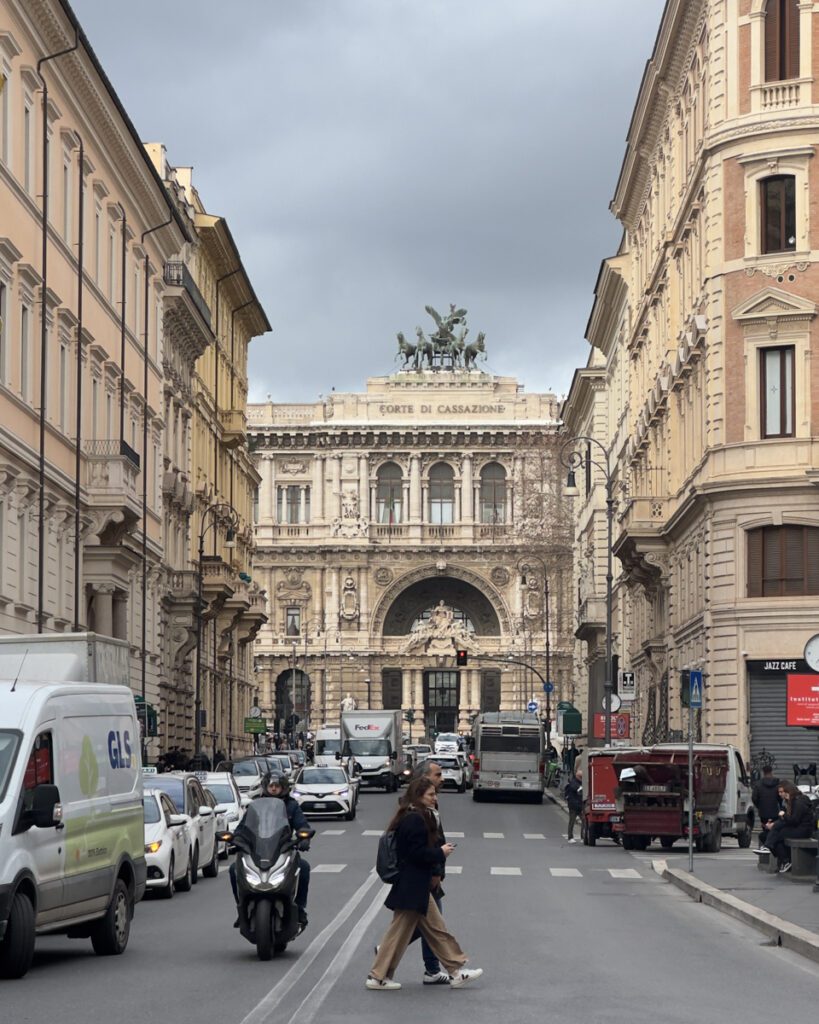
The first is to join a free walking tour. There are plenty of providers that offer a variety of walking tours – from the classics, to murder mysteries, to foodie tours, art tours and everything in between. Your choice will depend vastly on the amount of time you have and what your interests are. Guru Walks and Rome Free Walking Tours are some of the providers that offer these tours. And even though they are free tours, we recommend you tip the tour guide.
Another great way to enjoy a walking tour is with an audio guide. It’s a good option to explore at your own pace and to get more info about the places you’re seeing. We enjoyed some of the walk-throughs that Rick Steves offered in Rome. On this Rome walking tour page, you can find some audioguides for other attractions in the city and all throughout Italy.
14. Attend the Pope’s weekly address, an unforgettable free activity in Rome
If you want to do something truly unique in Rome, why not attend an audience with none other than the Pope!
On Wednesdays, when the Pope is in town, he holds an audience with the public. And of course, it’s free to attend. All you have to do is to book tickets to attend the papal audience.
The audience takes place on Wednesdays at 9 am (when the Pope is in Rome). The doors open at 7:30 am. During this Audience, the Pope shares small teachings and readings, mainly in Italian, but also in English, French, and other languages depending on the visiting groups. This is a great way to experience a different side of Rome.
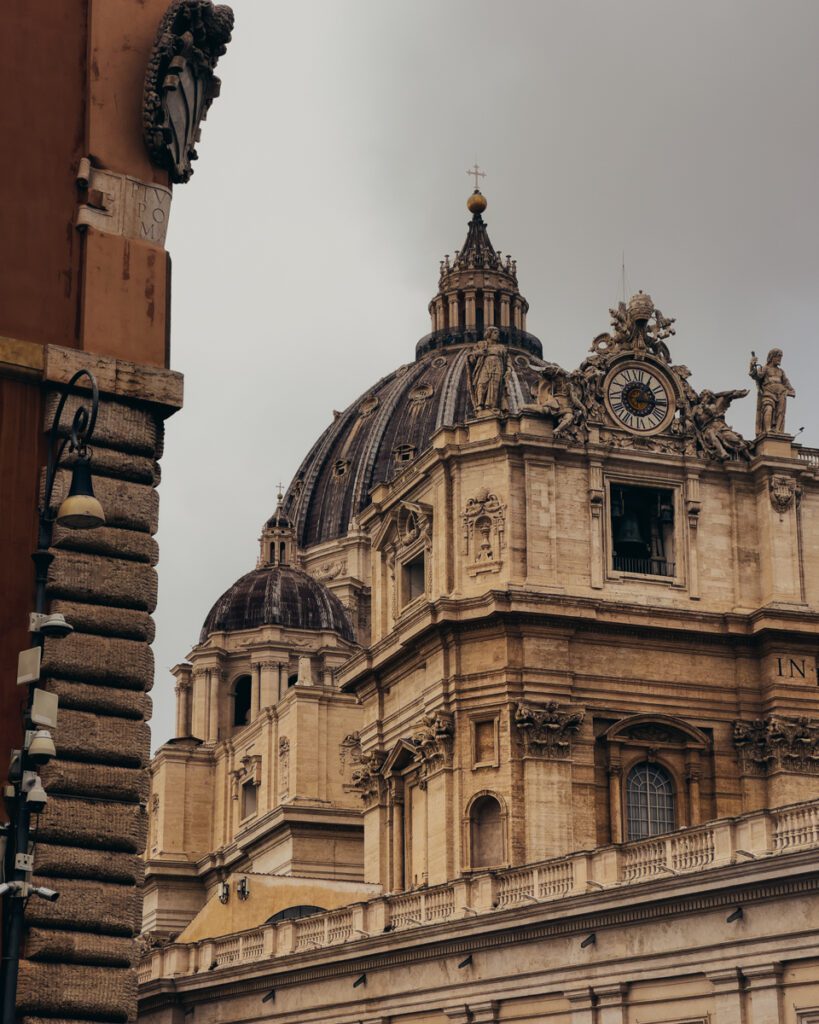
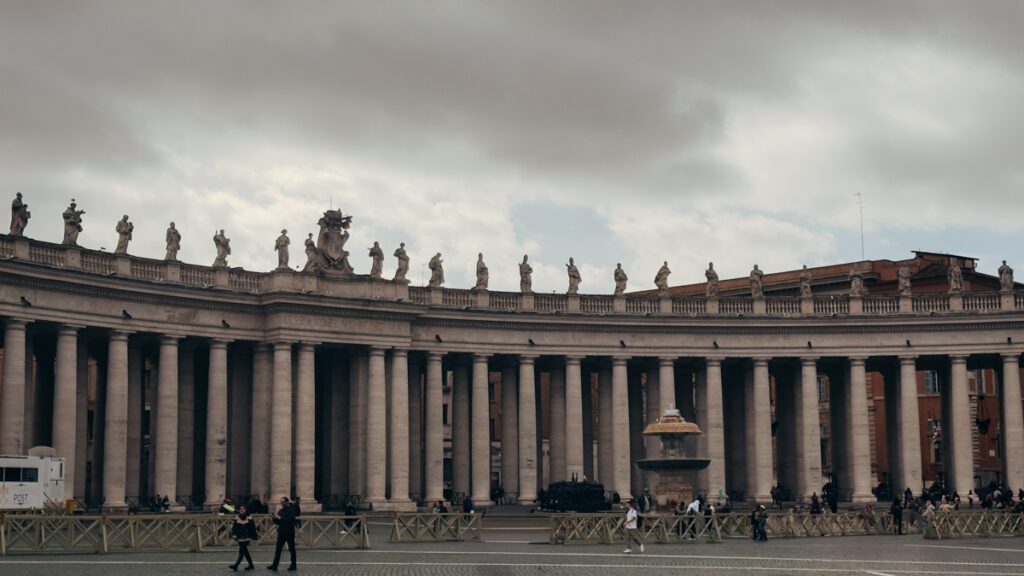
You can also see the Pope on Sundays when he is in town. He holds a ceremony at noon, where he appears from the window of his apartment. The ceremony takes place in front of the Vatican.
From there, he gives a short speech followed by the Angelus. The ceremony ends with a blessing. No tickets are needed for this ceremony – it happens outside, in the main square in front of the Vatican. Keep that in mind if you want to visit the Basilica or the museum, as there will be a lot of people.
These are 2 free experiences you can enjoy for free in Rome, and with the Pope himself. Not too bad!
15. Stroll or bike down the Appian Way, a free Rome historic tour
Known as Via Appia Antica, the Appian Way is one of the earliest and most important Roman roads. It’s lined with ancient tombs and ruins, and surrounded by picturesque countryside. It provides a glimpse into ancient Roman life and architecture.
Constructed in 312 BC by the Roman censor Appius Claudius Caecus, this road was initially built for military purposes to connect Rome with the southern regions of Italy. It’s also renowned for its catacombs and ancient tombs lining the roadside.
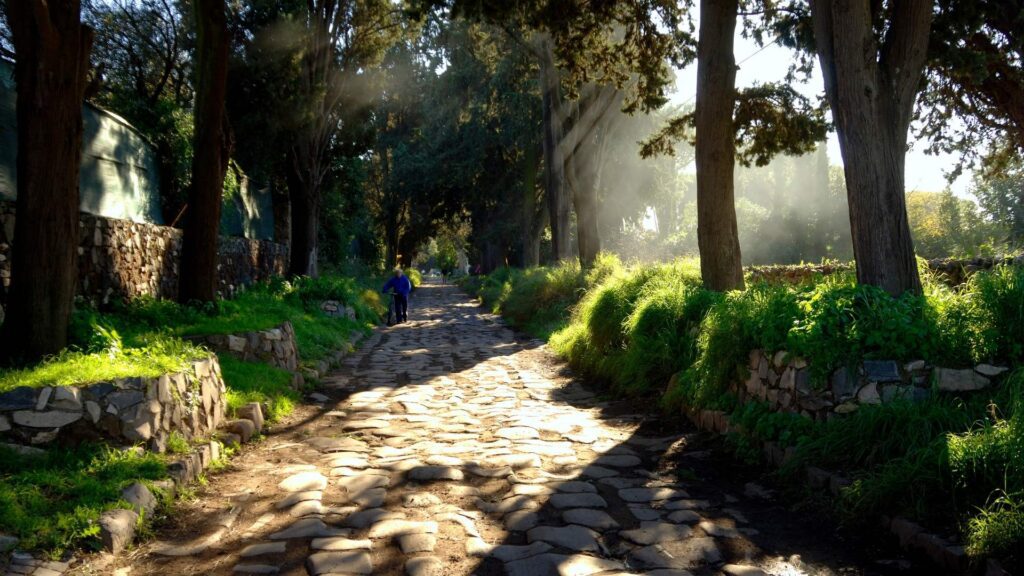
If you’re looking for a free activity, stroll down the Appian Way. Here, you’ll pass by the ruins of the Villa of the Quintilii, an ancient Roman villa that once belonged to the Quintilii brothers, aristocrats from back in the day. You’ll see plenty of other ruins too. As for the catacombs we mentioned, some have an entrance fee to pay to get in.
You can also hire a bike and ride down the Appian Way, if you prefer. This will require you pay for the rental (obviously), and you’ll need to plan your route yourself. If not, you can splurge and pay for a tour. This will give you more information about the ruins and the sights.
If you have a morning or afternoon to spare, a walk down the Appian Way is a wonderful free thing to do in Rome. It’s like taking a stroll down history’s memory lane!
16. Eat at the markets for free in Rome
Yes, we’re serious. You can eat for free at the markets in Rome. You won’t get full, but it’s a great way to taste-test some yummy local fare.
While walking around the market of Campo di Fiori, Derek was constantly being offered cheese, meat and bread. The local vendors want you to taste some of their treats to convince you to buy them! And they’re not wrong! One bite, and he was hooked.
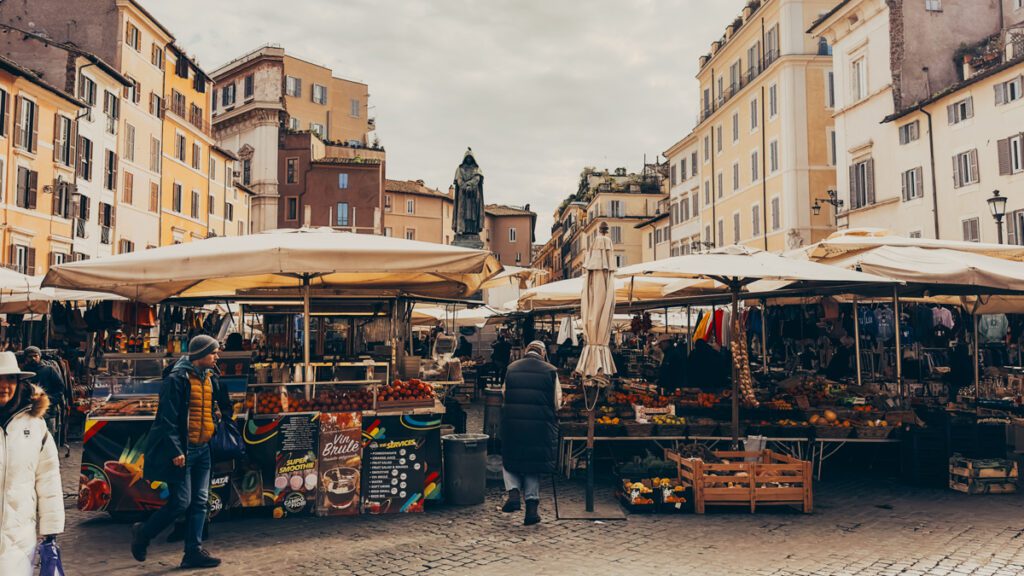
Every vendor has a little sample they offer for free to visitors. The trick to take full advantage of their generosity is to arrive early, so they’re not as jaded by all the tourists.
And of course, if you like what you taste, why not buy a bit. We adored buying from these vendors and packing little snacks and lunches we can enjoy in some of the best spots in the city. Whether we were going to the many piazzas, parks or gardens (more on these below), we always had something delicious to munch on while people-watching.
17. Stroll the park at Villa Borghese, a free activity in Rome
Villa Borghese is a vast estate in the heart of Rome. It’s known for its beautiful gardens, extensive art collection, and the renowned Borghese Gallery. Although you have to pay to visit the Gallery, the Gardens are free to explore.
After buying your snacks at one of the local markets, head to the gardens to enjoy your treats. Stroll along winding paths, discover hidden lakes, and keep an eye out for nymphs and other sculptures peaking out from the lush greenery.
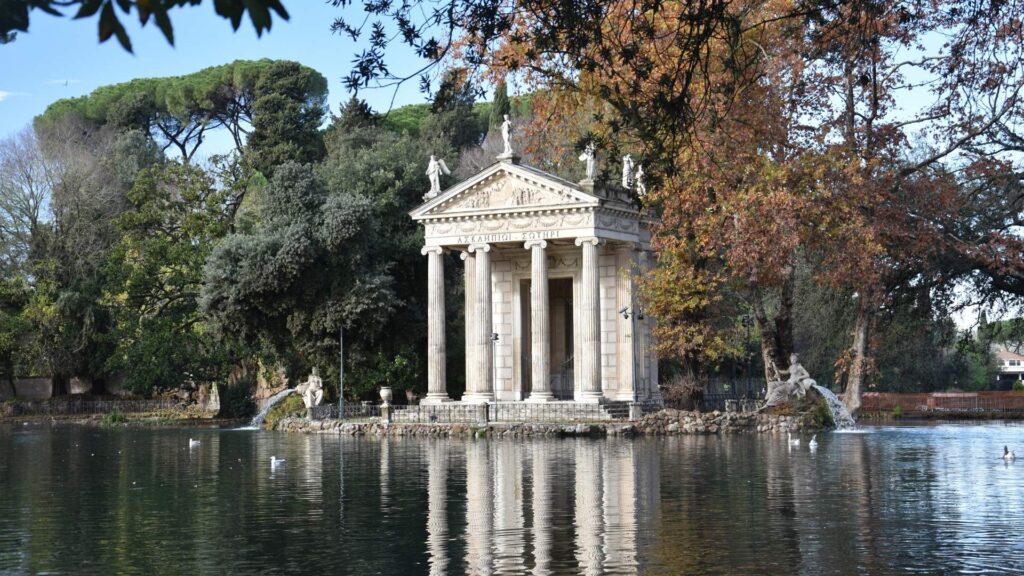
In the free Gardens of Villa Borghese, you can find the Tempio di Esculapio (a small temple on the lake) and Orologio ad Acqua del Pincio, a hydropower clock. Walking around here is a perfect way to spend some of your time during your 3 days in Rome.
There are plenty of hidden gems on the property. Don’t miss the Aranciera, a charming orangery housing a contemporary art collection. Or, catch a film at the Cinema dei Piccoli, the world’s smallest cinema which is tucked away in the park.
On hot summer days, this is a great place to find some shade and take refuge from the hustle and bustle of the city.
INFORMATION ABOUT VILLA BORGHESE & THE GALLERY
Official site
Name in Italian: Villa Borghese. Galleria Borghese
Opening hours: From Tuesday to Sunday: 9 am to 7 pm. Last entry is 5:45 pm. Closed on Mondays and major Holidays
Entry Price: The Gardens are free to visit. €26 for the Gallery.
Location: Check here on Google Maps. Piazzale Scipione Borghese, 5
Transport: Metro Line A. Spagna, Barberini or Flaminio Station. You have to then climb the hill and walk another 20 minutes through the gardens to reach the gallery.
18. Escape to Aldobrandini Park, a free hidden gem to explore in Rome
Here’s another Rome hidden gem to add to your list of free activities in the Eternal City – visiting Aldobrandini Park. It’s your chance to get away from the crowded piazzas and Ancient Roman structures.
Villa Aldobrandini Park is a hidden garden that’s hard to find, unless you know where to look. A true hidden gem, it’s tucked away behind thick high walls on Via Nazionale. Its entrance can be found at the top of a small side street called Via Mezzarino. Here, you’ll notice a tall iron gate with steep steps leading up into what looks like Ancient Roman ruins. You’re on the right path!
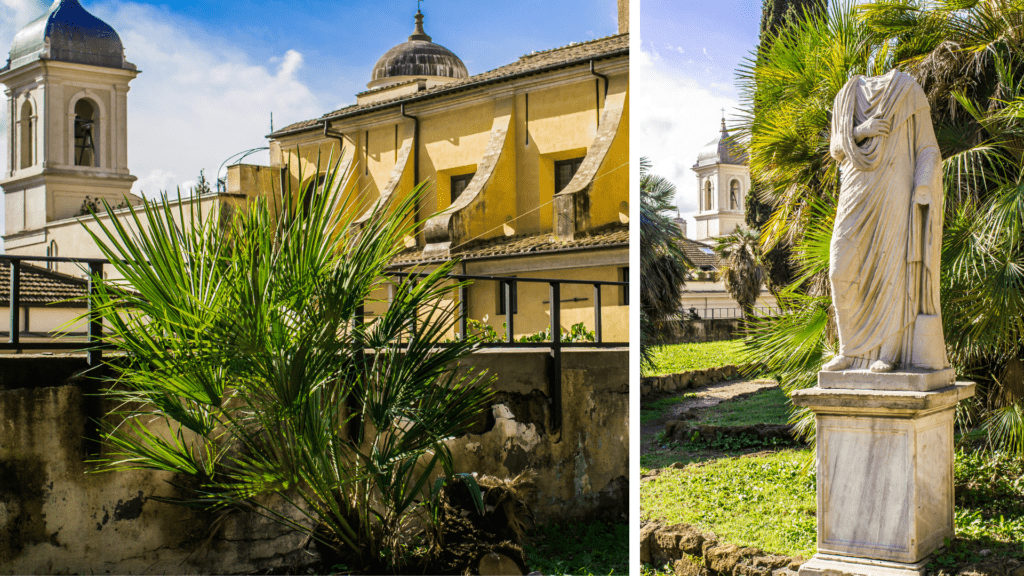
At the top of the steps, you’ll find a stone path that leads you to a magical lush garden sprinkled with benches and neoclassical statues. You’ll mainly find locals here or those looking for some peace and quiet.
The park offers plenty of open spaces and shaded areas where you can relax, have a picnic, or simply enjoy a peaceful moment surrounded by nature. It’s a perfect spot for families, couples, or those looking to unwind and escape the hustle and bustle of city life.
MORE INFORMATION ABOUT VILLA ALDOBRANDINI
Official Site
Name in Italian: Villa Aldobrandini
Opening Hours: Every day, from 7 am to 6 pm
Location: Find it here on Google Maps
19. Catch the view at Gianicolo, one of the best vistas of Rome
If you want to enjoy the stunning views of Rome, head to Gianicolo, Janiculum Hill. From here, you can see iconic landmarks like St. Peter’s Basilica, the Roman Forum, and the Colosseum. It’s perfect to visit during sunset or at night when Rome is illuminated.
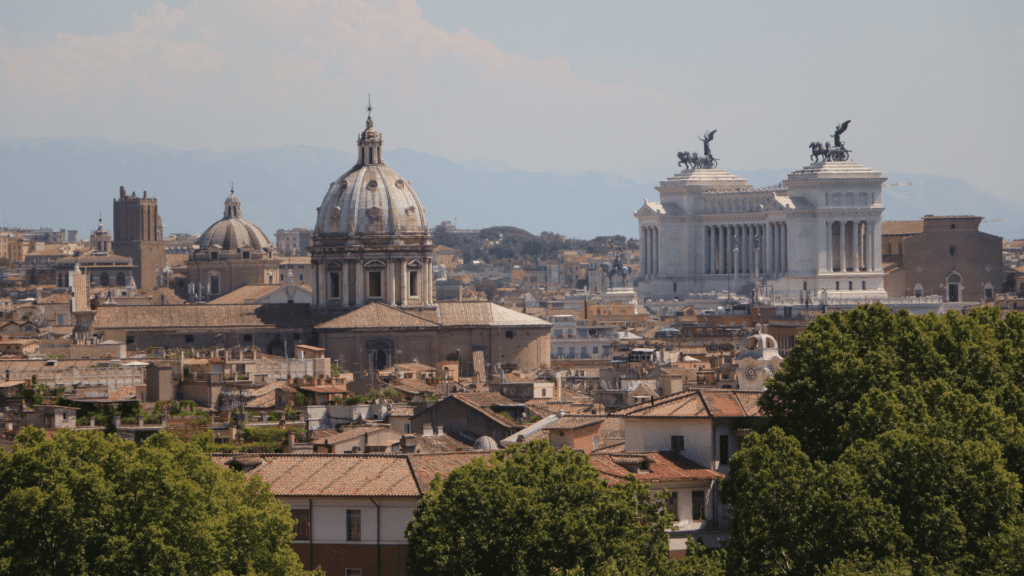
Gianicolo Hill has historical significance as the site of several notable events in Roman history. This is where the Battle of Rome took place in 1849. You can find monuments and statues commemorating figures such as Giuseppe Garibaldi, an Italian patriot and leader of the Risorgimento. All this is free to explore!
If you want more free things to see in Rome, you can find a few of them here, at the Gianicolo. First, you have the Fontana dell’Acqua Paola (also known as the Fontanone), the Tempietto del Bramante, and the Passeggiata del Gianicolo, a scenic walkway lined with statues and fountains.
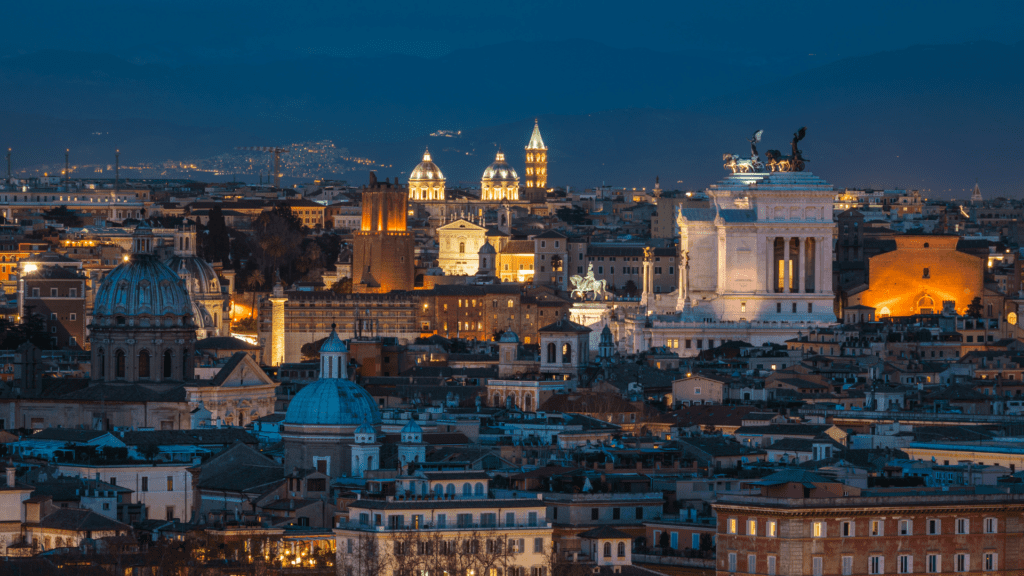
During the summer months, Gianicolo Hill often hosts cultural events, performances, and festivals. During this time, you can enjoy live music and street performances, all while taking in the panoramic views of Rome. Not bad for one of the best free activities in Rome!
If you’re looking to see Rome in a different way, the Gianicolo hill is a great place to do it.
MORE INFORMATION ABOUT BELVEDERE OF GIANICOLO
No official site
Name in Italian: Belvedere del Gianicolo
Opening Hours: Every day, 24-7
Location: Find it here on Google Maps
20. Take a stroll in the Giardino Degli Aranci, one of the best free things to do in Rome
If you’re looking for another beautiful park to discover, check out Giardino Degli Aranci. This Garden, known as the Orange Garden, is located on Aventine Hill, one of the famous Seven Hills of Rome. If you’re walking around Rome, it’s only about 20 minutes south of the Colosseum.
Established in 1932, today, the park is known for its serene atmosphere and beautiful scenery. Its design is said to be inspired from the architect Raffaele De Vico. And again, it’s the perfect place to escape the busyness of Rome.
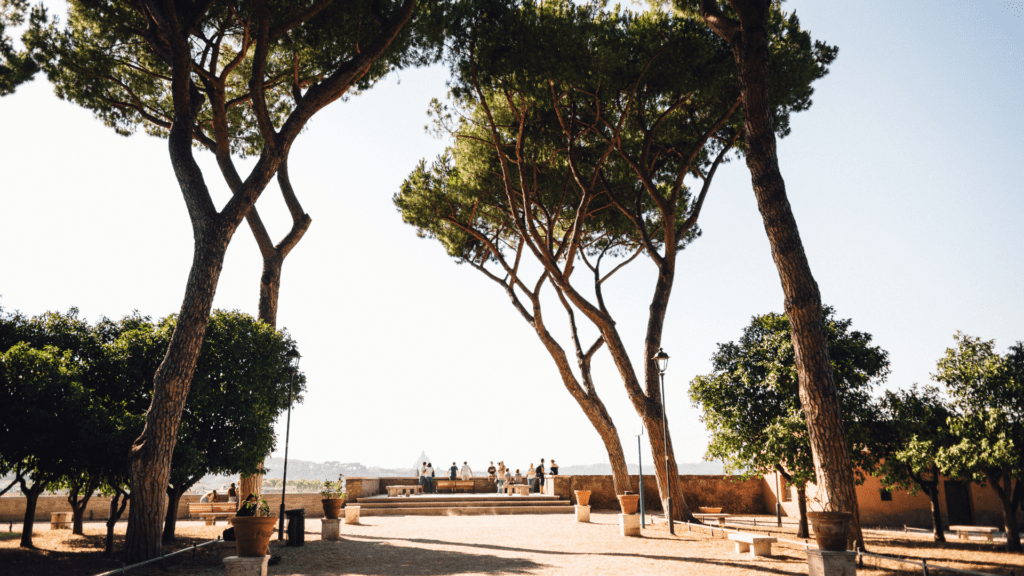
As the name suggests, this garden is home to orange trees. Let yourself be transported by their fragrance! Walk along the winding paths and stop to catch one of the best views of Rome. From here, you can see the Tiber River, St. Peter’s Basilica, and the historic center of Rome, with is iconic landmarks, the Colosseum and the Palatine Hill.
If you head here, make sure to check out the Basilica of Santa Sabina, one of Rome’s oldest churches. This Rome hidden gem is also free to explore and it dates back to the 5th century. You can explore the basilica’s ancient architecture and intricate mosaics.
Giardino degli Aranci is a hidden gem in Rome in its own right. Plus, it offers breathtaking views, a romantic ambiance, and a peaceful escape from the hustle and bustle of the city—all for free. The Orange Garden is definitely worth a visit, as well as a spot on your list of the best free things to do in Rome!
MORE INFORMATION ABOUT THE ORANGE GARDEN – GIARDINO DEGLI ARANCI
Official Tourism Site
Name in Italian: Giardino Degli Aranci
Opening Hours: Open every day from 7 am to 6 pm
Location: Find it here on Google Maps
21. Walk around the Jewish Quarters, a trip through Rome’s more recent history
As we mentioned, we love to walk around cities to discover more about them. And walking through the historic Jewish Quarters of Rome is a real treat you can enjoy for free.
The Jewish Ghetto or Jewish Quarters of Rome are both historic yet have a renewed energy about them. To truly enjoy your walk through here, it’s important to know some of its history.
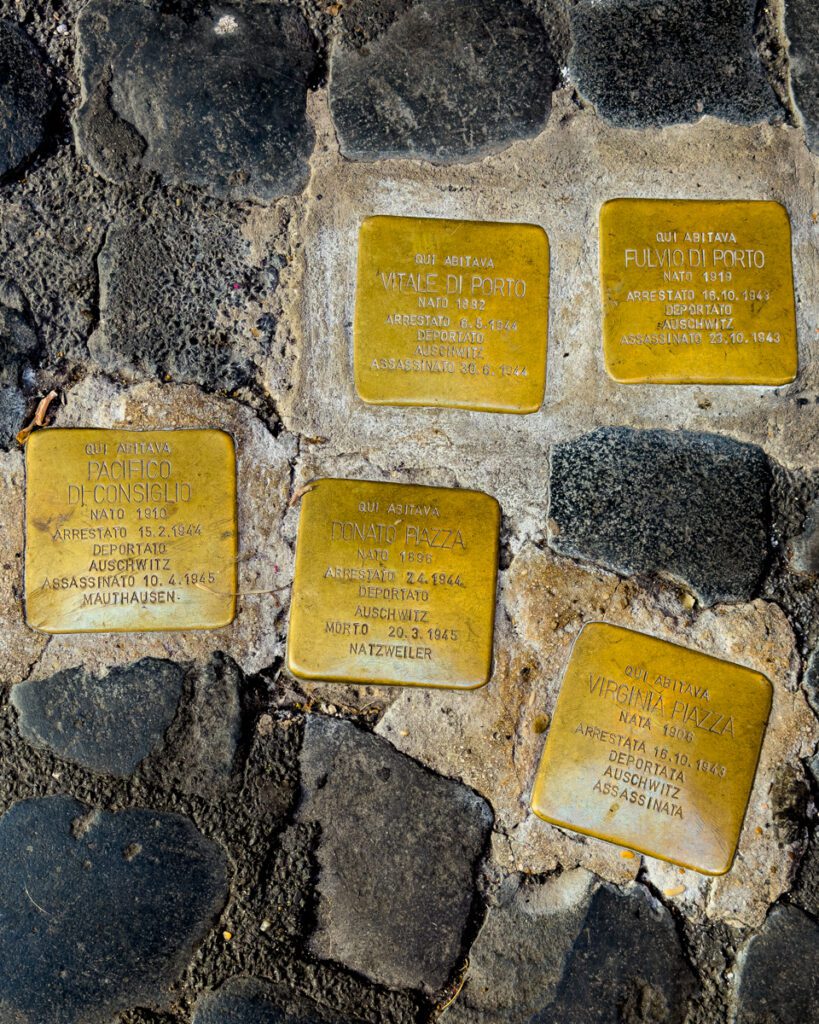
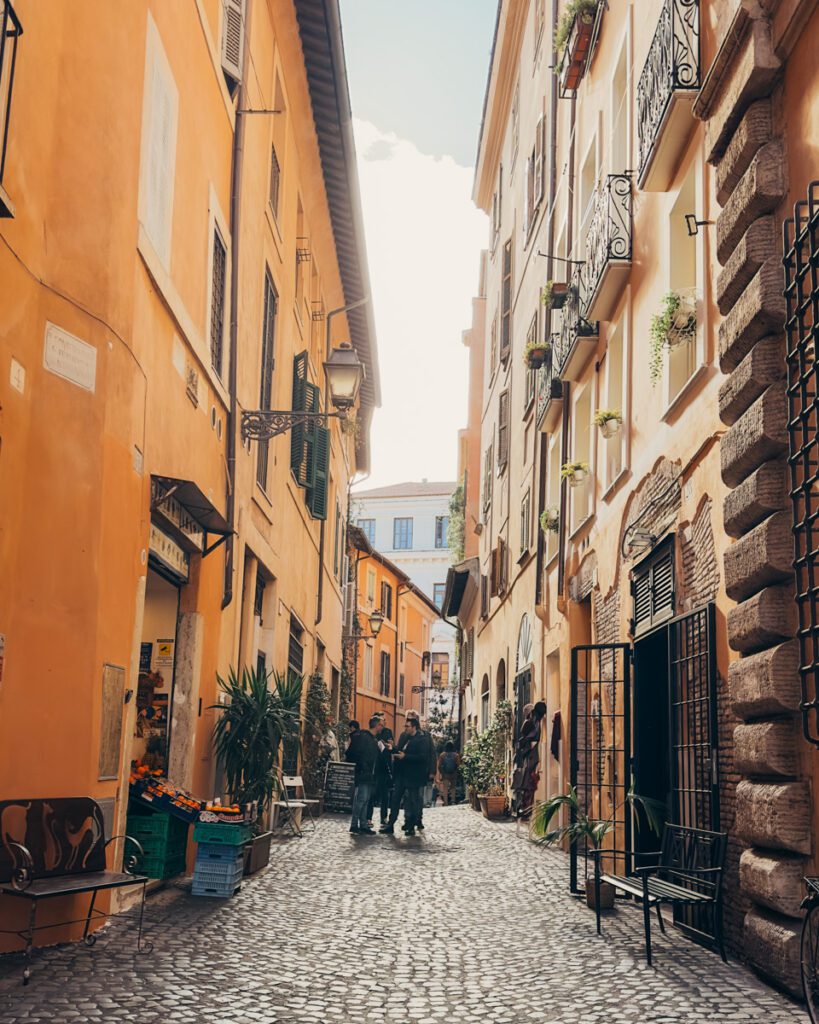
In 1555, a papal decree confined Rome’s Jewish population to this quarter, away from the rest of the city. In 1870, the walls fell, granting newfound freedom to the Jewish people. However, World War II brought new challenges, with remnants still visible today.
You’ll notice brass plaques on the streets called Pietri d’inciampo – Italian for Stumbling Stones. These are mini memorials scattered throughout the Quarters, with over 200 of them in total. They mark the homes from which Holocaust victims were taken, and they’re located outside doorways, often grouped together – one stone for each family member recounting the tragic details of their fates.
Visit the Great Synagogue of Rome, or the nearby Jewish Museum of Rome to dig deeper into this community’s history and culture. The museum is not free to visit, however.
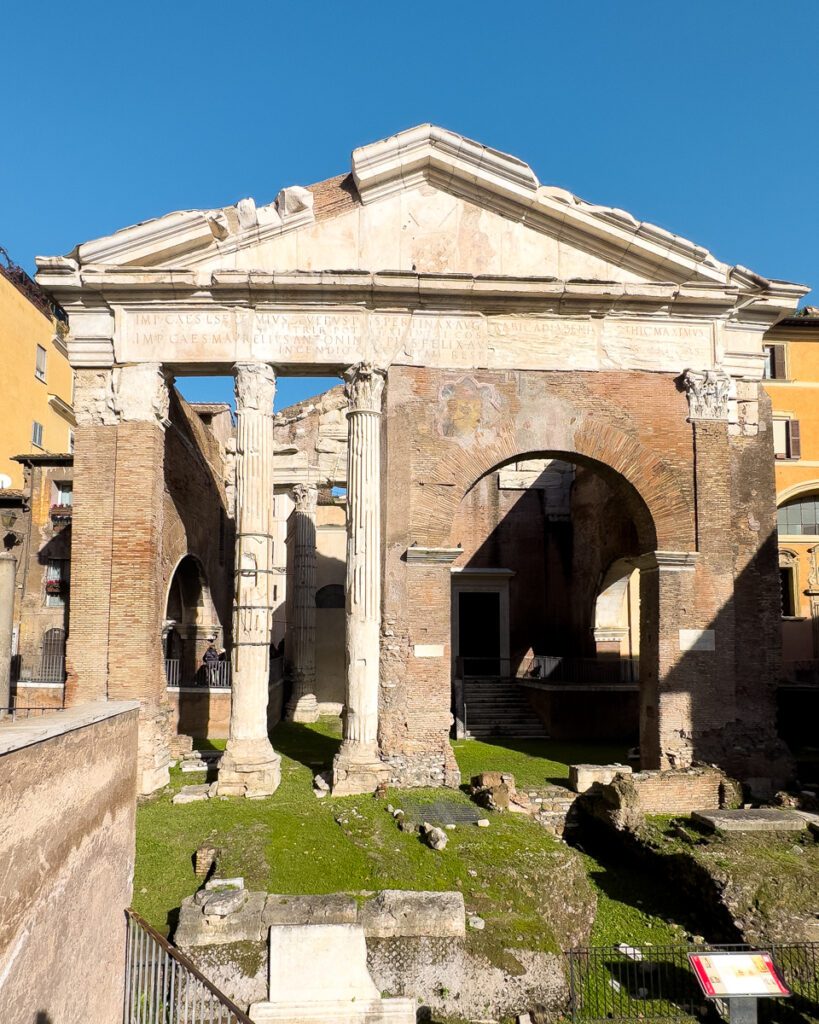
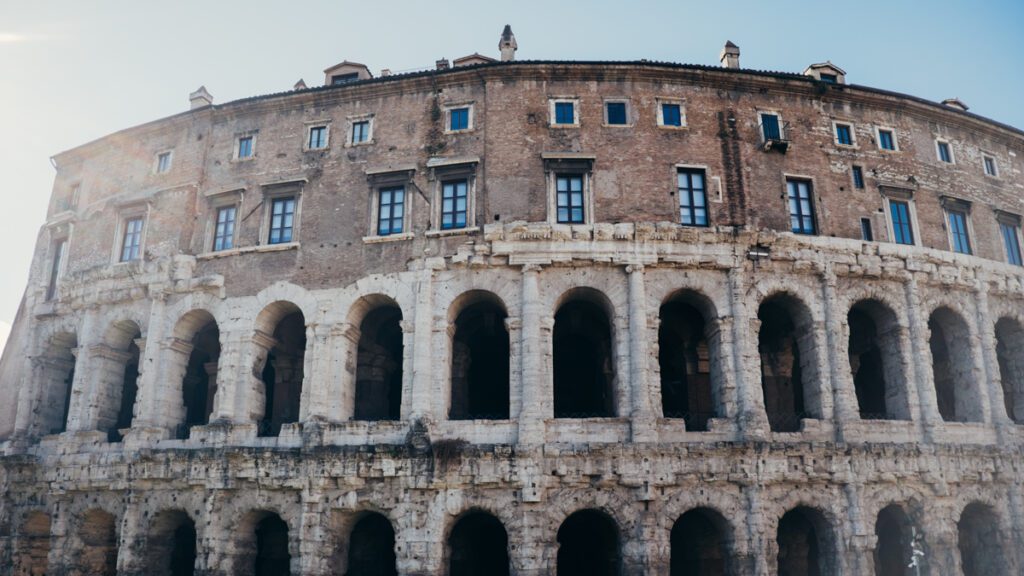
Today, the Jewish Ghetto is a vibrant tapestry of old and new. You can enjoy Kosher restaurants where they offer traditional delicacies – Roman dishes with a Jewish twist. Enjoy artichokes prepared in the Jewish style (carciofi alla giudia) and fried codfish (filetti di baccalà).
Within the Jewish Quarters, you’ll also find the ruins of the Portico d’Ottavia and Teatro Marcello. You can freely wander the trail here. They stand as a reminder of the rich history of the area.
If you want to learn more about the Jewish Quarters in Rome, you can also check out this audio tour by Rick Steves.
INFORMATION ABOUT THE JEWISH QUARTER
No official site
Name in Italian: Ghetto Ebraico di Roma
Location: Check here on Google Maps.
22. Discover the up-and-coming Trastevere
Another great place to discover by foot is Trastevere which means “across the Tiber”. It’s a charming and historic neighborhood in Rome, often overlooked by tourists. It’s characterized by narrow cobblestone streets and colorful buildings with ivy and flowers that climb onto the facades. Trastevere offers an authentic glimpse into Roman life.
Here, you’ll find quaint cafes, artisan shops, and vibrant markets, making it the perfect place to explore for unique souvenirs. The neighborhood comes alive at night with its lively nightlife scene and bustling outdoor cafes, creating a sense of community that locals and travelers adore.
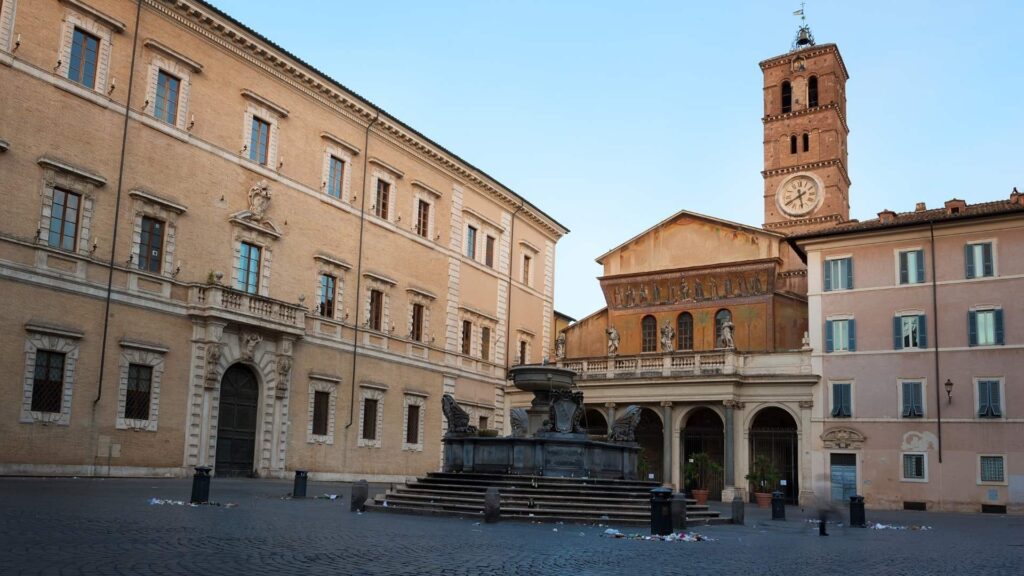
There are so many Rome hidden gems here. Don’t miss the landmarks of Trastevere, like the Basilica di Santa Maria, one of Rome’s oldest churches dating back to the 4th century. You also have the previously mentioned Gianicolo Hill and the Fontana dell’Acqua Paola. Here, you can catch panoramic views of Rome.
Since Trastevere is growing in popularity, it can get crowded, especially during the summer months. But its unique atmosphere and attractions make it well worth a visit.
INFORMATION ABOUT TRASTEVERE
No official site
Name in Italian: Trastevere
Location: Check here on Google Maps for the Basilica di Santa Maria. And here for the Fontana dell’Acqua Paola
23. See atmospheric architecture in Quartiere Coppedè
This is another opportunity to get off the beaten path in Rome. Quartiere Coppedè is a unique and whimsical neighborhood located in the Trieste district of Rome.
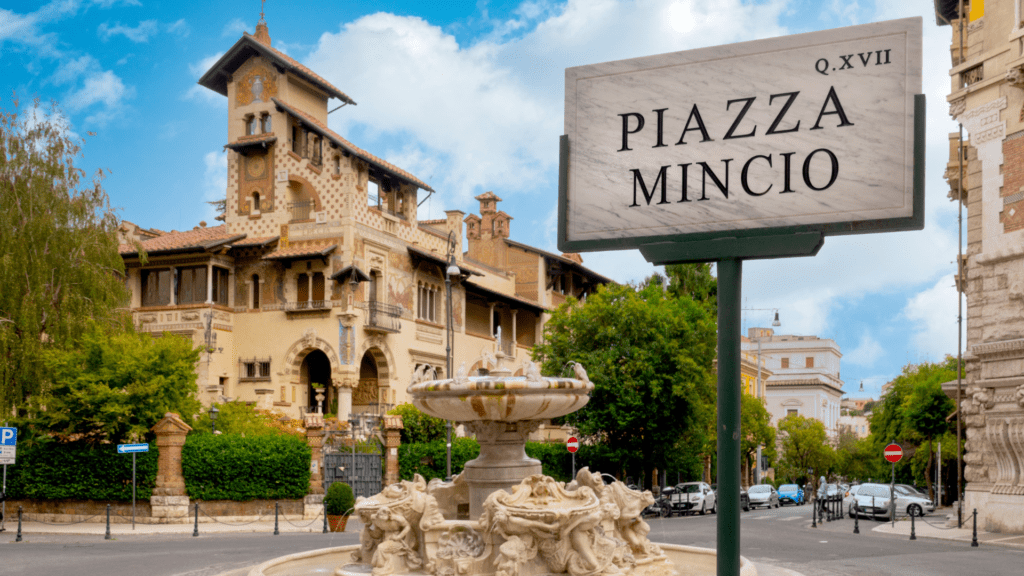
It was designed by architect Gino Coppedè and it features an eclectic blend of architectural styles that sets it apart from the rest of the city. Here, you’ll find a mix of Art Nouveau, Baroque, Medieval, and Renaissance influences. The buildings are adorned with elaborate facades, intricate mosaics, and ornate sculptures. Plus the narrow streets and lush greenery create a fairy tale-like atmosphere that transports you to another era.
Some of the most notable landmarks in Quartiere Coppedè include the Palazzo del Ragno (Spider Palace) with its spider-shaped wrought iron gates and Art Nouveau details, and the Fountain of the Frogs, a charming fountain adorned with bronze frogs and turtles.
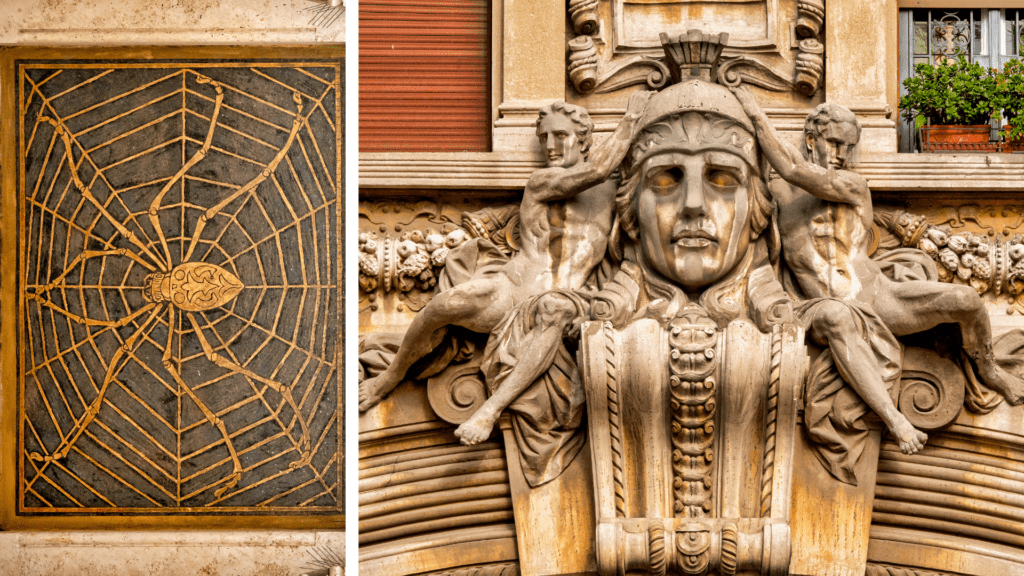
Despite its central location, Quartiere Coppedè still has a peaceful and tranquil ambiance – the perfect hidden gem for those looking to escape the crowds and discover a lesser-known side of Rome.
If you have the time, Quartiere Coppedè is well worth the detour. It’s another free place in Rome that you can discover on your own.
MORE INFORMATION ABOUT COPPEDE QUARTER
Official Tourism Site
Name in Italian: Quartiere Coppedè
Opening Hours: Open every day, 24-7
Location: Find it here on Google Maps
Free Rome Hidden Gems to discover
Although there are a ton of free landmarks you can see in Rome, we highly recommend you make the time to explore the less touristy parts of Rome.
These are other free attractions that will show you a different side to Rome. You can add these to your 3-day itinerary or stop and see them on your way to the more popular places in Rome.
From pyramids to a beautiful cemetery, lesser-known basilicas, and more, we’ve got you covered with some unique hidden gems in Rome that are sure to take your breath away, while still helping you discover Rome on a budget.
If you want to discover more hidden gems in Rome, we recommend you check out our full article here.
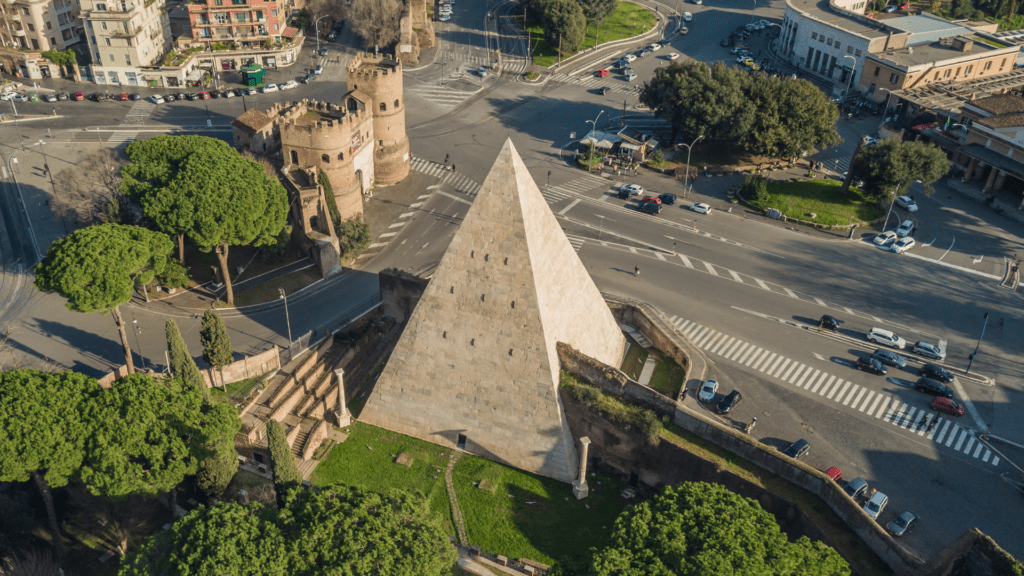
24. Pyramid of Cestius, a free Rome landmark not many know about
Did you know there was a pyramid in Rome? We didn’t either! But if you want to see one of the coolest attractions in Rome for free, check out the Pyramid of Cestius. This ancient pyramid in Rome is located near the Porta San Paolo and the Protestant Cemetery.
This pyramid was built around 18-12 BC as a tomb for Gaius Cestius, a Roman magistrate. It’s actually one of the best-preserved ancient buildings in Rome and stands at around 36 meters tall. The Pyramid of Cestius was incorporated into the city’s fortifications in the Aurelian Walls during the 3rd century AD.
Just like the pyramids in Egypt, the Pyramid of Cestius was made of brick-faced concrete and covered in white marble slabs. This stems from the Roman Empire’s fascination with Egyptian culture. Initially, there was no entrance to the pyramid. However, over time, an entrance was built, and after restoration in 2015, you can now enter the pyramid. When the tomb was opened, frescoes were found inside, however, only a few have been preserved.
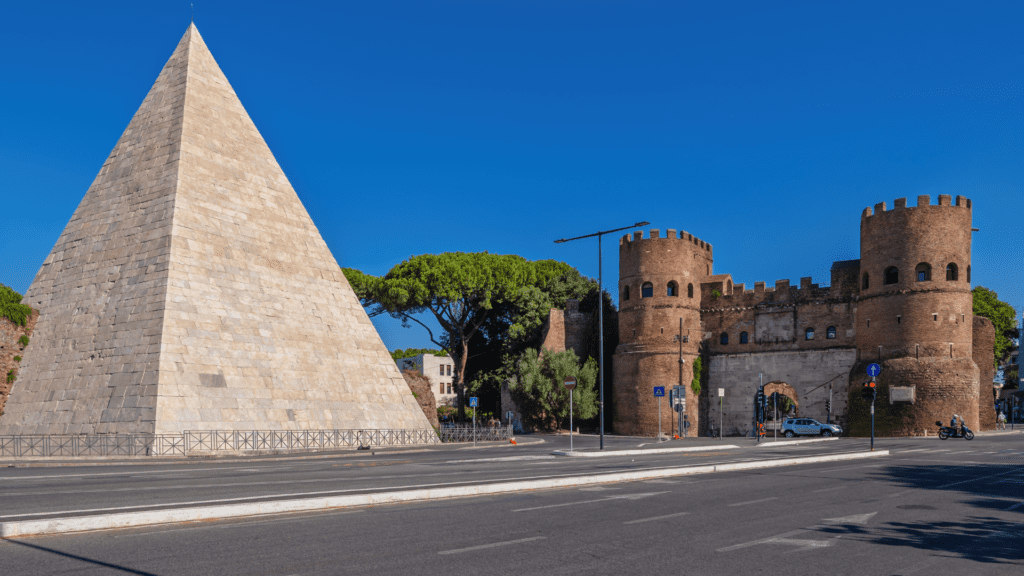
What’s great about this free thing to do in Rome, is that you can check it out when you visit the nearby cemetery (more on that next). You can visit it whenever you want as it’s a quick walk-by and photo-op.
Also, you can visit the inside of the pyramid – however, you will have to pay for this. The inside is open on the second and fourth Saturday of each month. Individual visits are at 11 am and cost €5.50 – not super expensive, so it might be worth it! Group tours can be booked for noon for around €40. You will need to book tickets ahead of time, and you will need around an hour to do the tour.
If you’ve been to Rome a few times, and haven’t yet been to the Pyramid of Cestius, we recommend you add it to your list. It’s one of the rare hidden gems in Rome that are free.
MORE INFORMATION ABOUT PYRAMID OF CESTIUS
Official Site
Name in Italian: Piramide di Caio Cestio
Opening Hours: Visible every day from outside, 24-7. Open every second and fourth Saturday of each month for inside tours.
Location: Find it here on Google Maps
25. Explore the beautiful Cimitero Acattolico, a free Rome activity
The Cimitero Acattolico, which translates to the Non-Catholic Cemetery, is also known as the Protestant Cemetery of Rome. It’s located near the Pyramid of Cestius and the Porta San Paolo. If you want to group these free Rome attractions in one visit, it’s a great idea!
The Protestant Cemetery was established in the early 18th century as a burial place for non-Catholic foreigners and religious minorities in Rome. Over the centuries, it has become the final resting place for many notable individuals, including poets, artists, scholars, and diplomats.
You might be wondering why this place has made it onto our list. Well, the cemetery itself is beautiful. We love visiting cemeteries when they are in beautiful settings and create a serene atmosphere. We loved the cemeteries we visited in Zagreb (Croatia) and Chichicastenango (Mexico). They give you a deeper understanding of the local culture and traditions.
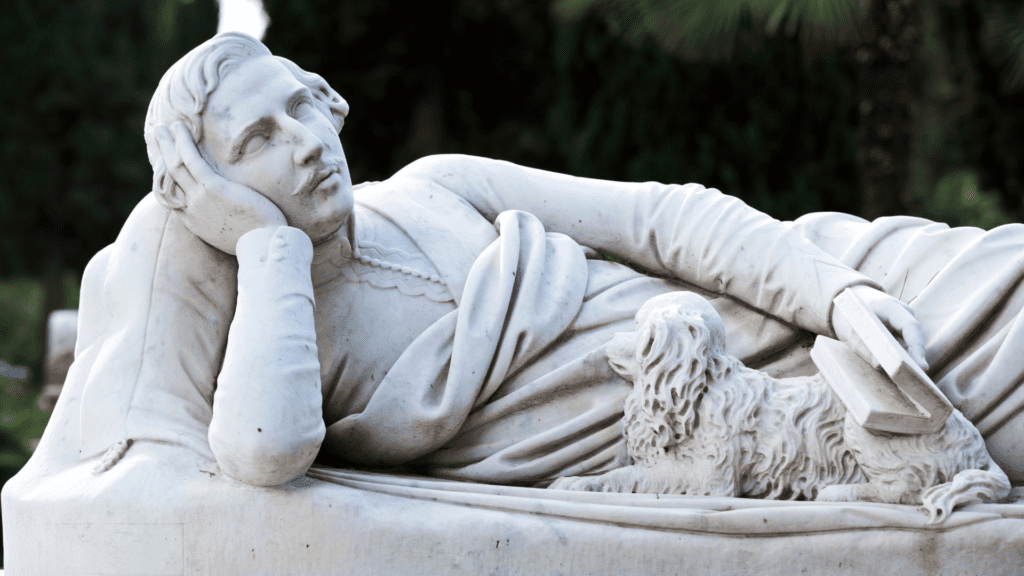
At the Cimitero Acattolico, you can find a collection of beautiful tombstones and search for those belonging to prominent figures like the English Romantic poet John Keats, who died in Rome in 1821. He is buried alongside his friend Joseph Severn. Other notable burials include the English poet Percy Bysshe Shelley and his wife Mary Shelley, as well as the Italian patriot and poet Giuseppe Gioachino Belli.
If you’re looking to escape the noise of the city, the Protestant Cemetery is a great place to go for a little bit. You can meander along the paths that are lined with trees. You’ll see different styles of tombstones and names of people from different ethnicities. A reminder of the city’s diverse population and its role as a cosmopolitan center of art, literature, and diplomacy over the centuries.
Overall, the Protestant Cemetery of Rome is a unique free attraction in Rome. It’s well worth a visit if you want to dig deeper into the city’s past and escape the hustle and bustle of the city, even for a little while.
MORE INFORMATION ABOUT THE PROTESTANT CEMETERY
Official Site
Name in Italian: Cimitero Acattolico
Opening Hours: Open every day from 9 am to 4:30 pm, except Sundays: from 9 am to 12:30 pm
Location: Find it here on Google Maps
26. Basilica di Santo Stefano Rotondo al Celio, a free church to see in Rome
A short distance from the Roman Forum and the Colosseum, you can find the Basilica di Santo Stefano Rotondo al Celio, also known as Santo Stefano Rotondo, a free attraction in Rome worth exploring.
Santo Stefano Rotondo is one of Rome’s oldest basilicas. What makes it so special is its circular design reminiscent of ancient Roman mausoleums. It has a celestial layout and is surrounded by a colonnade and atrium, which add to its grandeur. Decorated with ancient columns and beautiful frescoes, it also features a 13th-century depiction of the Last Judgment. The basilica is also home to the relics of Saint Stephen.
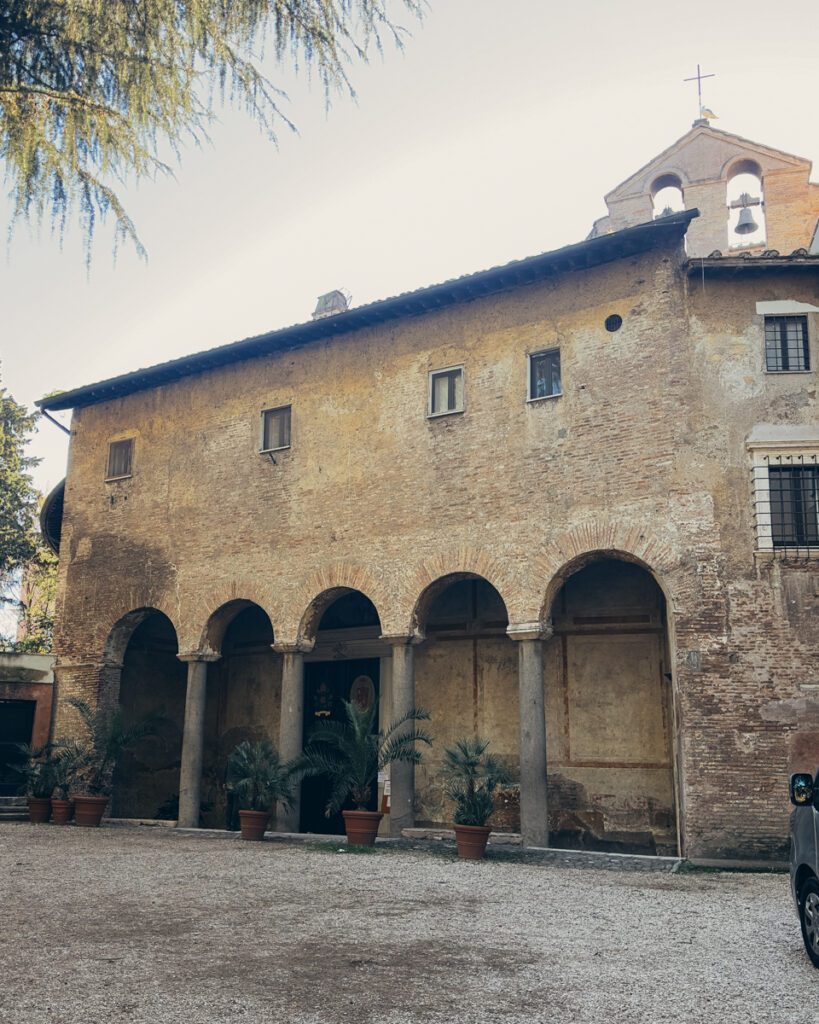
Outside, you’ll be greeted by a charming congregation of cats eager for affection. Take a moment to pet them before exploring the church’s architectural and historical wonders.
Note: The church closes briefly from 1-2 pm in the winter and from 1-3:30 pm in the summer. Plan accordingly, as closing times may vary – we arrived at 12:45 pm in January, only to find the doors already shut. Give yourself ample time to enjoy your visit – arrive at least 30 minutes before the closing time.
INFORMATION ABOUT SANTO STEFANO ROTONDO
Official site
Name in Italian: Basilica di Santo Stefano Rotondo
Opening hours: Closed on Mondays. Open Tuesday to Sunday 10 am to 1 pm, 2 to 5 pm (winter schedule). Open Tuesday to Sunday 10 am to 1 pm, 3:30 to 6:30 pm (summer schedule).
Location: Check here on Google Maps.
27. Chiesa di Sant’Ignazio di Loyola, a unique church to visit for free in Rome
The Chiesa di Sant’Ignazio di Loyola, or the Church of Sant’Ignazio, is a stunning Baroque church nestled in Rome’s historic center. From the outside, the church might blend in with others you’ve seen, but inside, it boasts one of Rome’s most captivating features.
Step in to marvel at the breathtaking frescoes adorning the ceiling, masterfully crafted by Andrea Pozzo. What makes the church so unique, and well worth the visit is that it’s home to many illusions. You’ll notice the faux dome. It’s renowned for its trompe-l’oeil effect, creating a sense of depth where none exists.
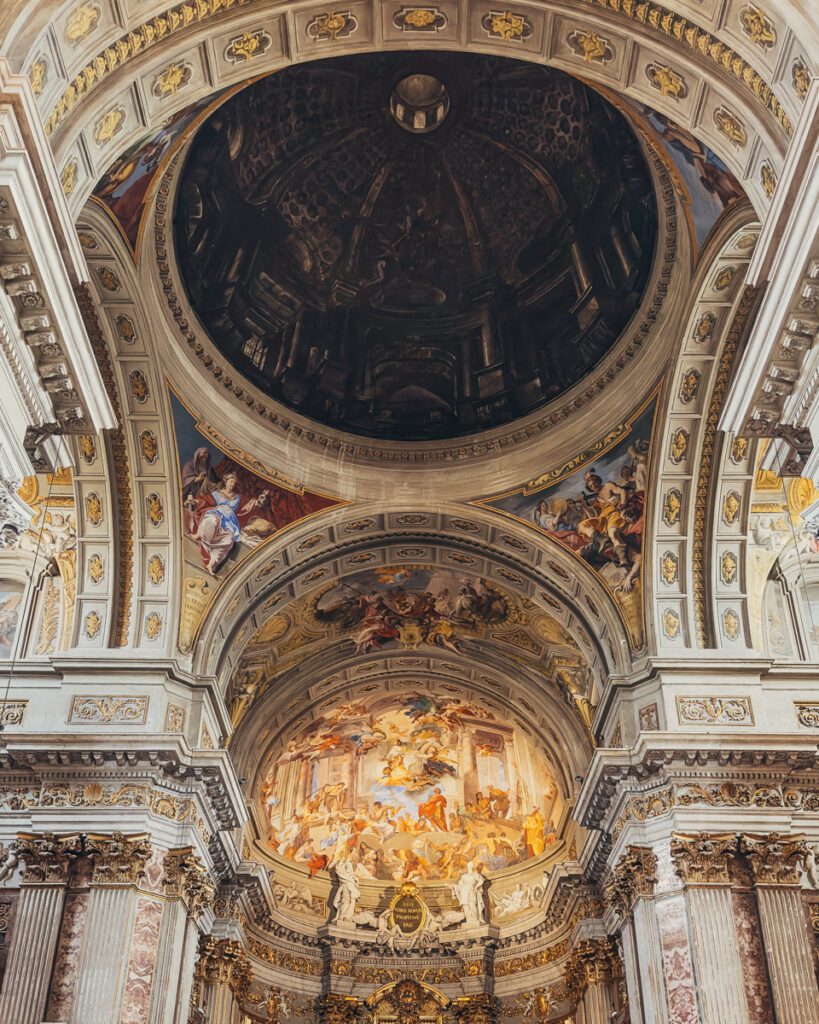
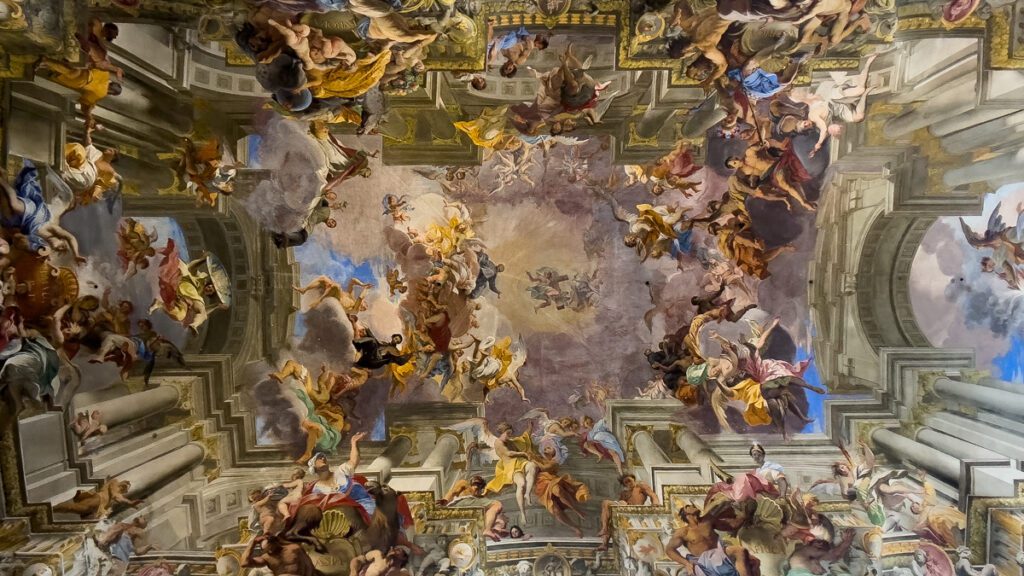
Recently, the church introduced a new Instagrammable attraction – a mirror that enhances the beauty of the frescoes, drawing so many visitors eager to capture the perfect shot. Though entry to the church is free, a small fee of €1 grants access to the mirror’s effects. Just beware that if you come in the middle of the day, there will be a long line-up for the mirror.
Also, remember that Sant’Ignazio is still a functioning place of worship. Dress respectfully and be mindful of those attending services.
INFORMATION ABOUT THE SAINT IGNAZIO CHURCH
Official site
Name in Italian: Chiesa di Sant’Ignazio di Loyola
Opening hours: Open every day, 9 am to 8 pm on weekdays, 9 am to 11:30 pm on Friday, Saturday and Sunday
Location: Check here on Google Maps.
28. Complesso di Sant’Ivo alla Sapienza, a free hidden gem in Rome
Our discovery of the Complesso di Sant’Ivo alla Sapienza happened totally by accident. This spot is simply breathtaking – it’s a true masterpiece of Baroque architecture!
It was designed by none other than the renowned architect Francesco Borromini. Nowadays, it’s part of the sprawling Sapienza University campus, and it’s home to a variety of amazing sights, including the Sant’Ivo alla Sapienza church, the Palazzo della Sapienza, and the Biblioteca Alessandrina. You’re going to love it here – even if you step in for a short while!
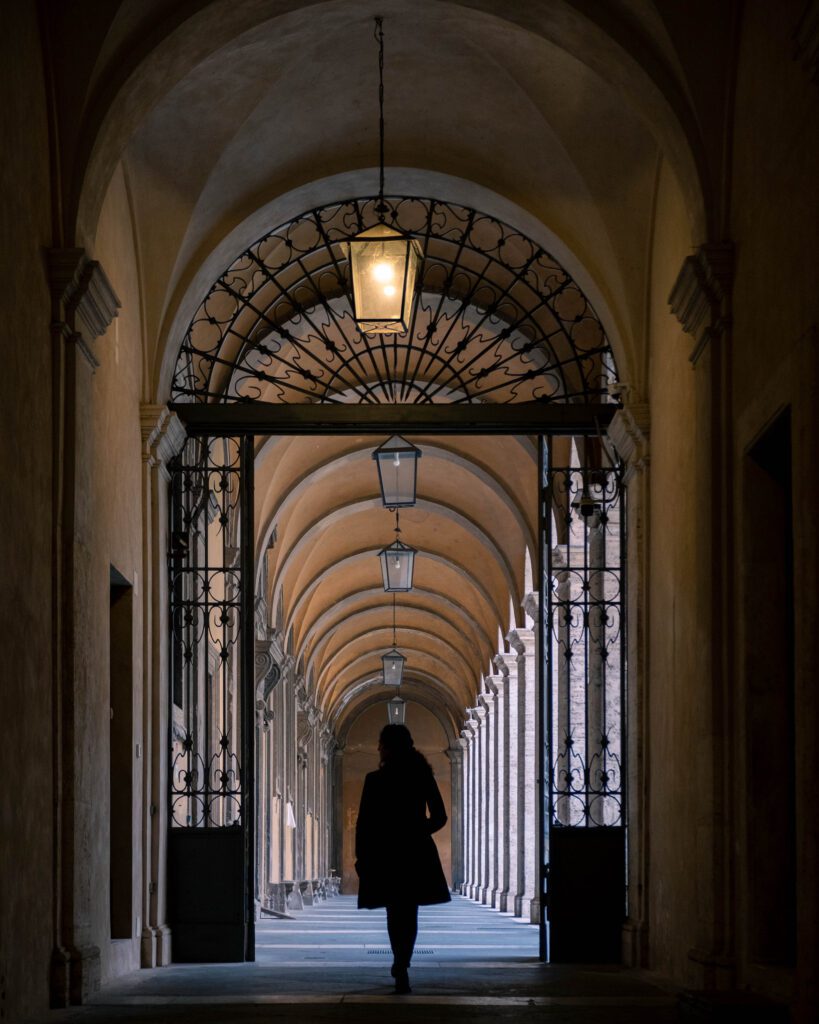
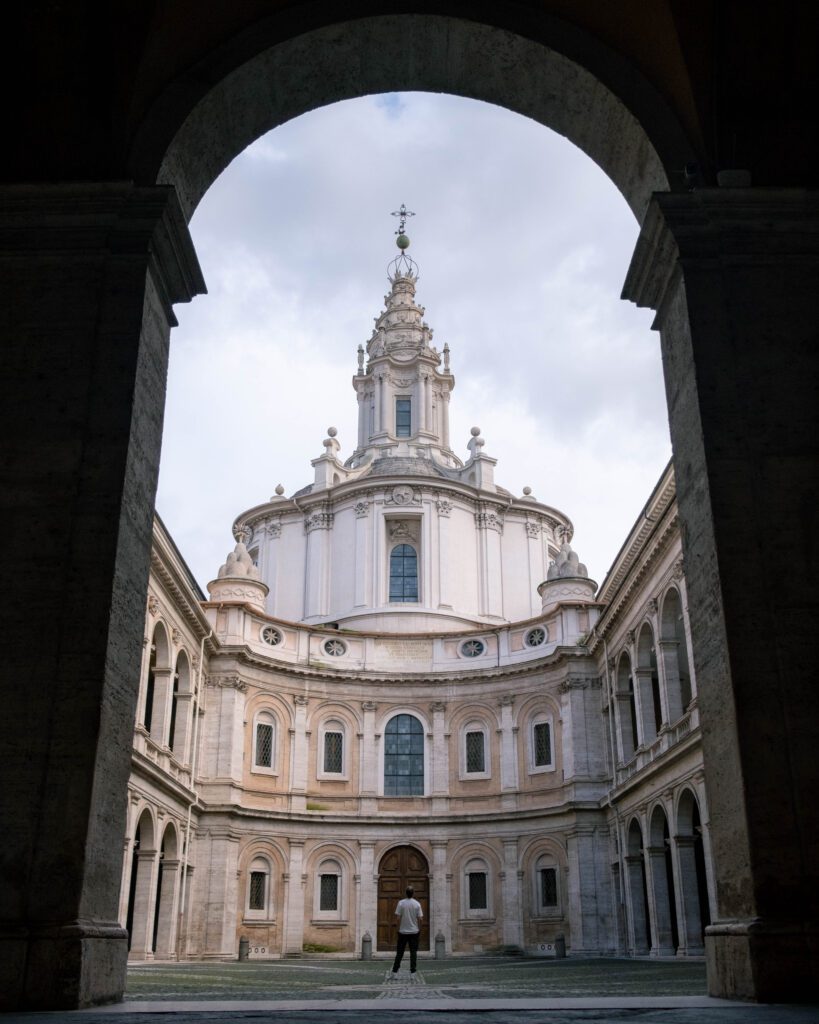
We highly recommend visiting the Complexe, a UNESCO heritage site that many tourists tend to overlook. You’ll be drawn in by the stunning architecture of the place, particularly the courtyard, which is surrounded by columns and arches, and the church’s impressive double dome, which is considered an engineering marvel and is one of the most recognizable domes in the city.
If you have a chance, we recommend visiting the library – Biblioteca Alessandrina. It was founded in the 17th century and is housed in the Palazzo della Sapienza. Inside, you can find an impressive collection of over 1 million books. The library is open to the public and well worth checking out.
Many people overlook this UNESCO heritage site when they visit Rome. You don’t need to spend a ton of time here, but it’s really worth stopping by if you’re in the area. It’s a few steps away from Piazza Navona. It’s one of those free attractions in Rome that’s well worth the stop.
INFORMATION ABOUT THE COMPESSO DI SANT’IVO ALLA SAPIENZA
Official site (In Italian)
Name in Italian: Complesso di Sant’Ivo alla Sapienza
Opening hours: Open weekdays, 9 am to 6 pm
Location: Check here on Google Maps.
29. Aventine Keyhole, a unique perspective of Rome’s icon
Here is a quick free attraction to explore while you’re around Aventine Hill in Rome. If you’re visiting the Orange Garden we previously mentioned, come take a quick detour here. It’s also close to the Basilica of Santa Sabina, one of the oldest churches in Rome and a hidden gem itself.
The Aventine Keyhole is also known as the “Piazza dei Cavalieri di Malta“. It’s another one of our free hidden gems in Rome. It’s located within the grounds of the Priory of the Knights of Malta.
You may be wondering why this is on our list. Well, as photographers, we love different perspectives, and that’s exactly what you get with this keyhole. Looking through it, you’re treated to a stunning and perfectly framed view of St. Peter’s Basilica in Vatican City. The keyhole acts as a natural frame, with the basilica’s dome perfectly centered and visible in the distance.
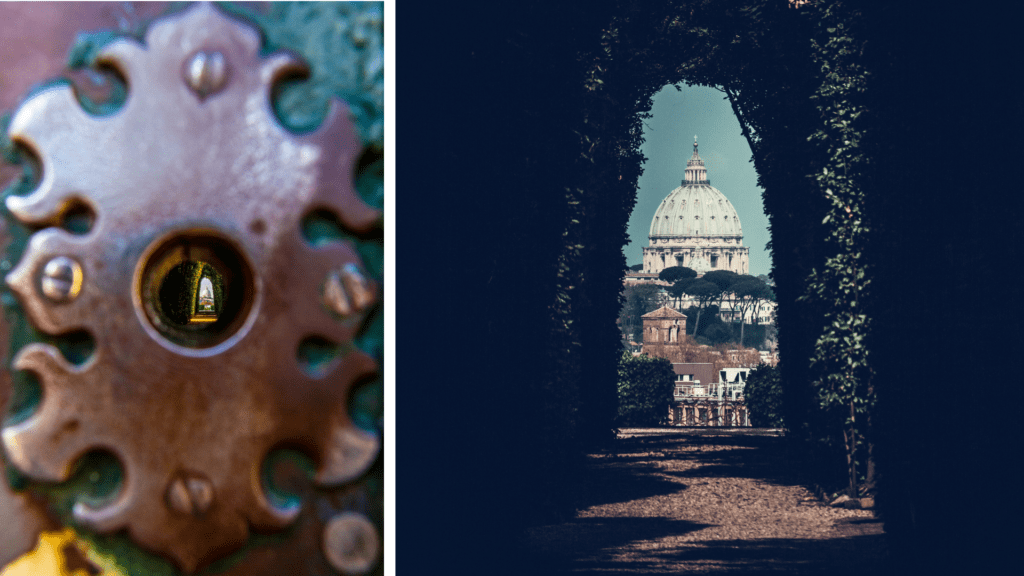
It’s also interesting to note that the keyhole is part of a large door leading to the garden of the Priory of the Knights of Malta. The symbolism of the keyhole is associated with the secrecy and exclusivity of the Knights of Malta, a medieval order of chivalry with a rich history dating back to the Crusades.
The keyhole attracts quite a few visitors. They often line up to take turns looking through the keyhole. The view is especially breathtaking at sunset or during the golden hour when the basilica is bathed in warm, soft light.
Overall, the Aventine Keyhole is a free hidden treasure in Rome. It offers visitors a one-of-a-kind view of St. Peter’s Basilica through a symbolic and evocative frame. It’s a must-visit destination for anyone exploring the Eternal City who wants a unique perspective on its rich history and cultural heritage.
Free museums in Rome
If you’re looking to dive deeper into the history of the Eternal City, and you’re visiting Rome on a budget, you’re in luck. There are plenty of free museums you can explore. And we’re not talking about the Free Rome Sunday museums and cultural sites. We’re talking about free all the time. All week. Anytime… well, within opening hours!
So here’s a quick look at all the free museums in Rome:
- Museo Carlo Bilotti: This free museum is located within Villa Borghese. Although the Villa’s Gallery entry is paid, this part is free to explore. The museum houses a collection of modern art donated by Italian-American entrepreneur Carlo Bilotti. Must-sees include works by renowned artists like Giorgio de Chirico, Andy Warhol, and Giacomo Balla. Check out their official site here.
- Museo Pietro Canonica: Another free museum located in Villa Borghese, this one showcases the works of Italian sculptor Pietro Canonica. Highlights include sculptures, reliefs, and architectural models created by Canonica during the late 19th and early 20th centuries. Check out their official site here.
- Museo delle Mura: Showcasing the history of Rome’s ancient city walls, this museum offers insights into their construction and significance. You can explore archaeological remains, models, and interactive exhibits detailing the evolution of the city’s defenses. Best of all, it’s all for free! Check out their official site here.
- Museo della Repubblica Romana e della Memoria Garibaldina: Located in the Gianicolo Hill area, this museum focuses on the history of the Roman Republic and the life of Giuseppe Garibaldi. Highlights include artifacts, documents, and multimedia displays illustrating key events and figures from Italy’s quest for independence. Check out their official site here.
- Casa Museo Alberto Moravia: Located in the historic center of Rome, near the Spanish Steps, this museum is dedicated to the renowned Italian novelist Alberto Moravia. The museum is in the apartment where he lived and produced much of his literary work. It offers you a glimpse into his life and features Moravia’s personal belongings, like furniture, books, manuscripts, and artwork collected during his lifetime. Visit the official site here.
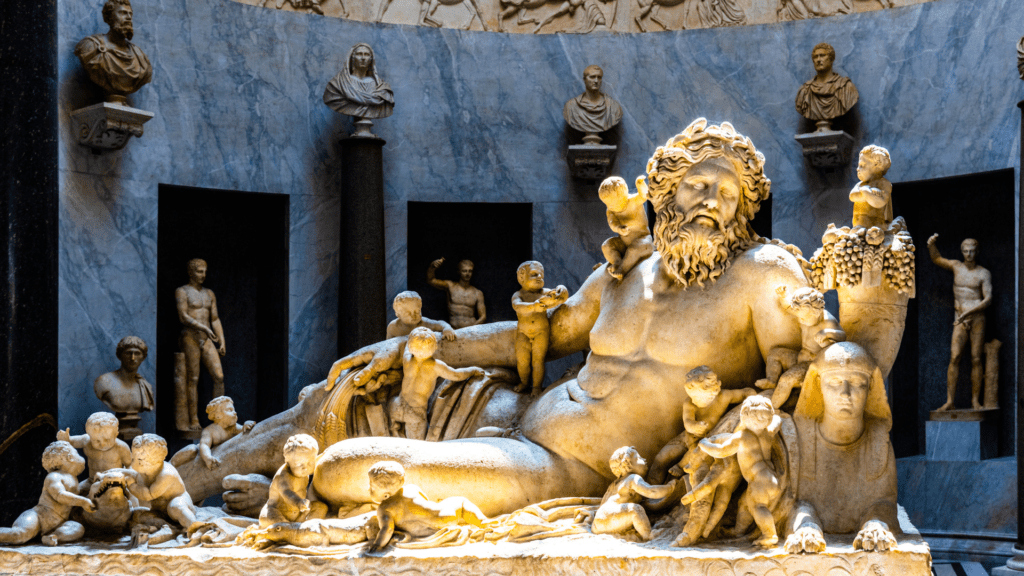
- Museo Barracco: Situated near Largo di Torre Argentina, this free museum features an eclectic collection of ancient sculptures and artifacts from various cultures and periods. Highlights include Egyptian, Greek, and Roman sculptures, as well as Etruscan and Assyrian artifacts. Check out their official site here.
- Museo della Liberazione di Roma: This museum commemorates the liberation of Rome during World War II, highlighting the resistance movement and the city’s role in the Allied victory. Visitors can explore exhibits, photographs, and personal accounts documenting this pivotal moment in history. You can visit their official site here.
- Villa di Massenzio: Located along the Appian Way, this archaeological site preserves the remains of a Roman villa built by Emperor Maxentius. Highlights include the Circus of Maxentius, a massive ancient stadium, and the villa’s ruins, offering insights into Roman imperial architecture and leisure activities. Check out their official site here.
- Museo Napoleonico: Dedicated to the Napoleonic era, this museum near Piazza Venezia features artifacts, memorabilia, and artworks associated with Napoleon Bonaparte and his family. Highlights include portraits, uniforms, and personal belongings belonging to Napoleon and his contemporaries. You can visit their official site here.
- Museo di Casal de’ Pazzi: This museum, located in the Casal de’ Pazzi area, offers insights into the history and culture of the neighborhood. Visitors can explore exhibits, artifacts, and multimedia displays highlighting the area’s rich heritage and community life. You can visit their official site here.
While these museums offer free admission year-round, it’s always a good idea to check their official websites for the most up-to-date information on opening hours and any special exhibitions or events. Additionally, some museums may request a voluntary donation to support their operations.
These free museums offer unique insights into different aspects of Rome’s history, art, and culture, as well as into the prominent people that have made an impact on the city. They’re all worthwhile destinations, especially if you’re visiting Rome on a budget.
Everything you need to know about Free Rome Sunday
If you’re looking for free things to do while you’re in Rome, you may want to plan your visit for the beginning (or end) of the month. This is when you have the Free Rome Sundays.
Every first Sunday of the month, state museums, archaeological parks, and cultural sites offer free access to all visitors. This is a great for those who want to explore Rome on a budget. It’s also a great initiative to promote the knowledge of Italian cultural heritage.
We’ll list the free sites below for you. It’s important to note that some locations are only accessible by reservation. All you have to do is book your ticket online or get it on-site. We recommend consulting the specific pages before planning your visit, just to be sure. You can also check the Minister of Culture’s website for details.
Also note that the Vatican Museums are not free on the First Sunday of the month, but rather, on the last one.
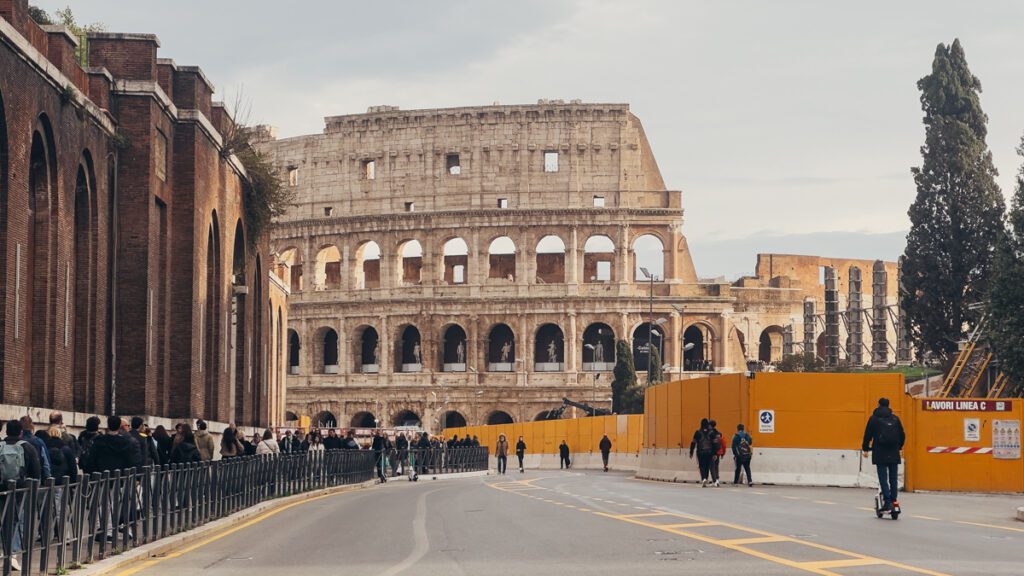
First Sundays are free in Rome
Here is a quick list of some of the free attractions and museums that are free on the First Sunday of the month. Note that some of the websites are only available in Italian. Turn on your browser’s translator.
Also, make sure you read the rules that apply for each. And if you want to avoid crowds (as much as it’ll be possible, head there at opening or at the last admission, usually 30-60 minutes before closing.
- The Colosseum. A must, even if you’ve already been here. You can only get the admission ticket at the ticket office of the Arch of Titus. Official site.
- The Roman Forum & Palatine Hill. Explore the heart of ancient Rome, where politics, commerce, and religion converged amidst majestic ruins. Steps away from the Colosseum and the Capitoline museums. Official site.
- Pantheon. A marvel of ancient engineering, this Roman temple-turned-church is home to a breathtaking dome and oculus. It houses the tombs of notable figures like Raphael. Official Site.
- Castel Sant’Angelo. This fortress-turned-museum offers panoramic views of Rome. Discover its rich history, from imperial tomb to papal refuge. Official site.
- Baths of Caracalla. Step back in time to experience the grandeur of ancient Roman baths, marveling at towering walls and intricate mosaics. If you can’t make it to the Roman Forum, this is a great substitute. Official site.
- Capitoline Museums. These are the world’s oldest public museums. The museum complex includes impressive collections of ancient Roman art and artifacts. Official site.
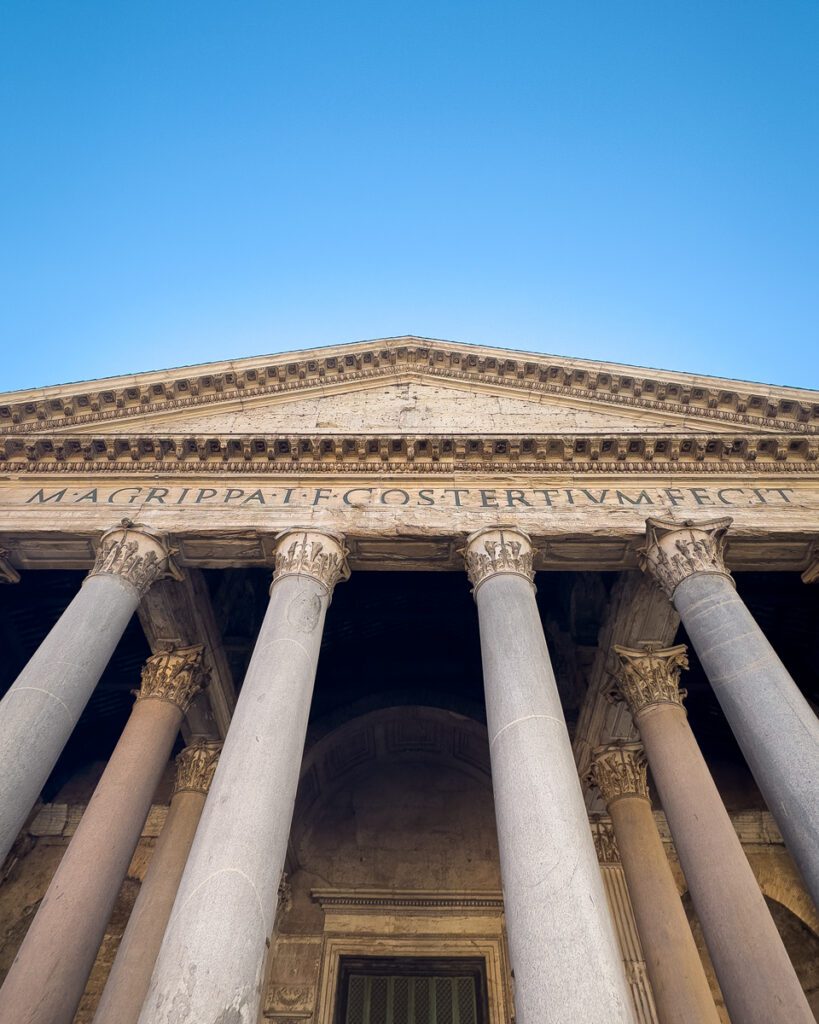
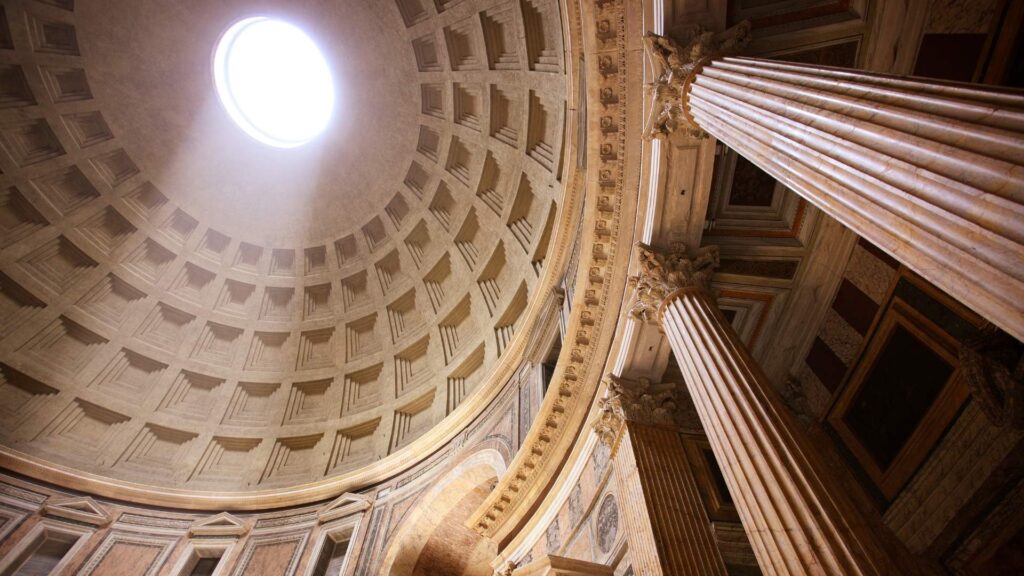
- Borghese Gallery. Immerse yourself in one of Rome’s finest art collections, housed within a lavish villa and showcasing masterpieces by Bernini, Caravaggio, and Raphael. Official site.
- Palazzo Venezia. Discover the Renaissance splendor of this historic palace, once the residence of popes and now home to a museum showcasing Italian art and culture.
- Mausoleum of Cecilia Metella. Admire the ancient beauty of this monumental tomb, a symbol of Roman grandeur standing along the Appian Way. Official site.
- National Roman Museum: The National Roman Museum comprises several sites across Rome, including the Palazzo Massimo alle Terme, Palazzo Altemps, Crypta Balbi, and Baths of Diocletian. All these locations showcase Roman art and archaeology.
- Galleria Nazionale d’Arte Moderna e Contemporanea: The National Gallery of Modern and Contemporary Art is located near Villa Borghese and offers free admission on the first Sunday of each month. It houses an extensive collection of Italian and international modern and contemporary art. Official site.
- You can see the full list of museums and sites that are free on the First Sunday of the month here.

Vatican museums on the last Sunday
As you noticed, most of the other museums and places are free on the First Sunday of the month. While the Vatican is free on the Last Sunday of each month.
This a special opportunity for you to explore the extensive art collections and historical treasures housed within the Vatican City walls without paying an admission fee. In fact, the Vatican museums house more than 70,000 pieces, making it one of the largest collections in the world. Plus, you can explore Michelangelo’s Sistine Chapel ceiling and the Raphael Rooms at no cost.
However, it’s important to note that while admission is free, the Vatican Museums tend to be exceptionally crowded on Free Sundays, so you should expect long lines and limited viewing time for each exhibit.
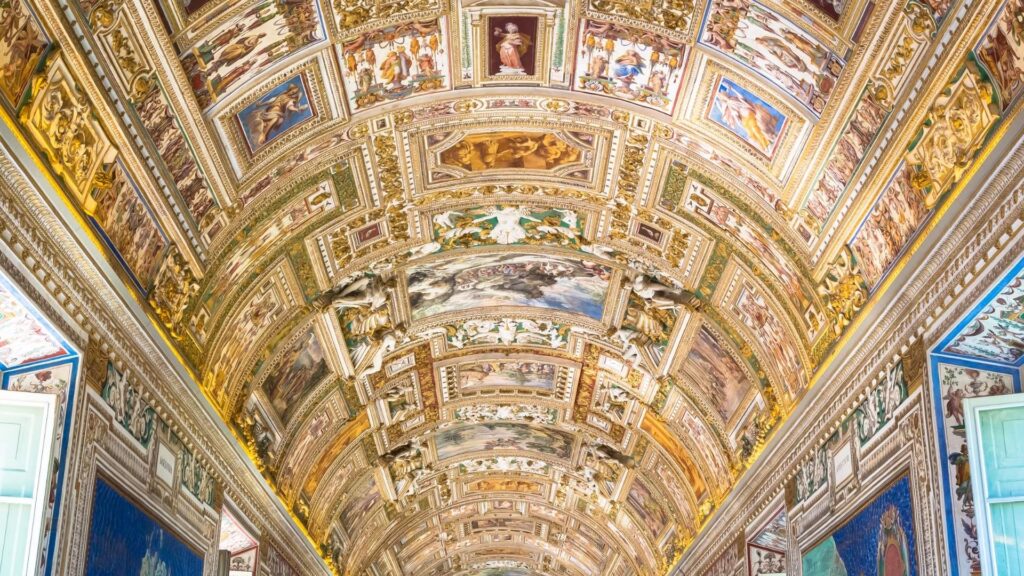
Top 32 Free things to do in Rome
There you have it! All the free things you can do in Rome. We tried to give you as much info about each place and tell you how you can enjoy them for free.
If you want to plan a full 3-4 day itinerary in Rome and try to squeeze in some of these amazing free attractions, make sure you check out our article here. And to help you avoid scams and put together the best possible trip to Rome, don’t forget to check out our article with the top tips and travel hacks for you.
As a reminder, here are the best free attractions in Rome:
- St. Peter’s Basilica
- Roman Forum from a vantage point
- Colosseum
- Arch of Constantine
- Altar of the Fatherland
- Piazza del Campidoglio
- Via dei Fiori Imperiali
- Trevi Fountain
- Galleria Sciarra
- Spanish Steps
- Piazza Navona
- Castel Sant’Angelo outside
- Go on a free walking tour
- Attend the Pope’s weekly address
- Appian Way stroll
- Eat at the markets
- Villa Borghese gardens
- Villa Aldobrandini Park
- View over Rome from Gianicolo
- Orange Garden
- The Jewish Quarter
- Trastevere
- See atmospheric architecture in Quartiere Coppedè
- Pyramid of Cestius
- Cimitero Acattolico
- Basilica di Santo Stefano Rotondo al Celio
- Chiesa di Sant’Ignazio di Loyola
- Complesso di Sant’Ivo alla Sapienza
- Aventine Keyhole
- Visit a free museum
- First Sundays in Rome
- Last Sunday at the Vatican museums
Let us know in the comments which of these free attractions in Rome you’re most looking forward to exploring. Are there any others that we should be adding to the list?
Thank you so much for reading the article all the way through!
We put a lot of time and effort into the content we create. Please like, comment and share – every action on your part helps us out tremendously and is very appreciated.
You can also help us by pinning this article for others to find.
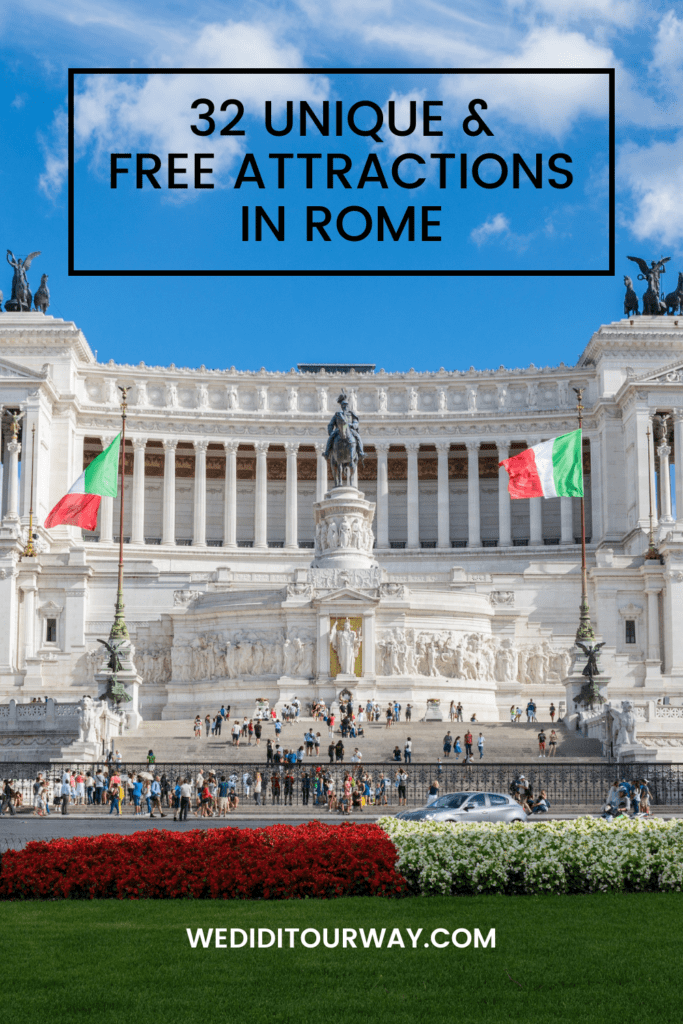
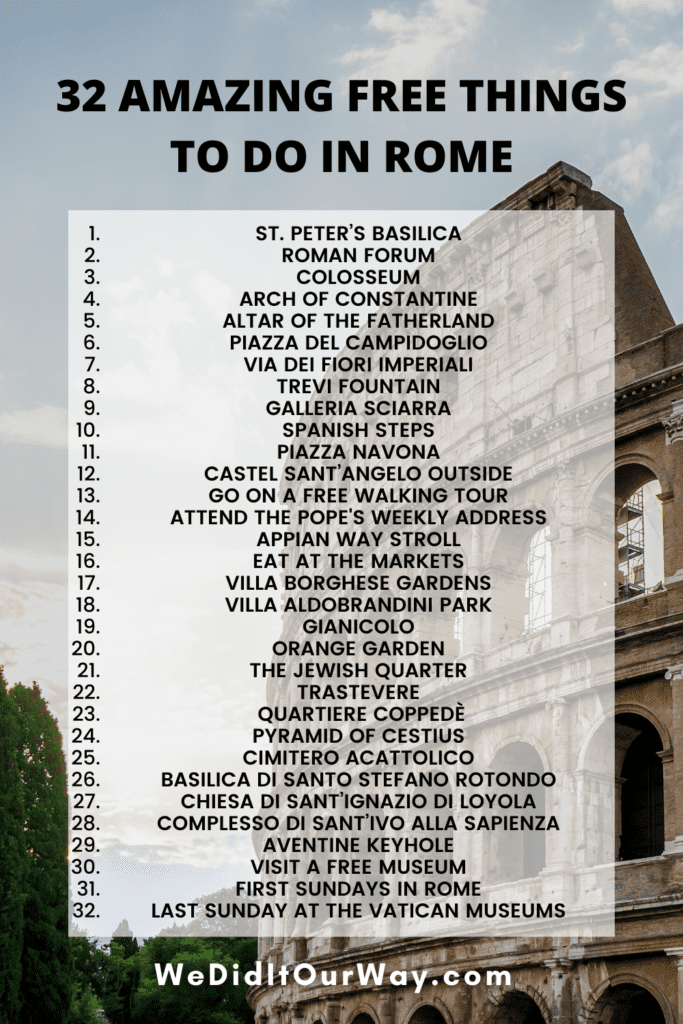
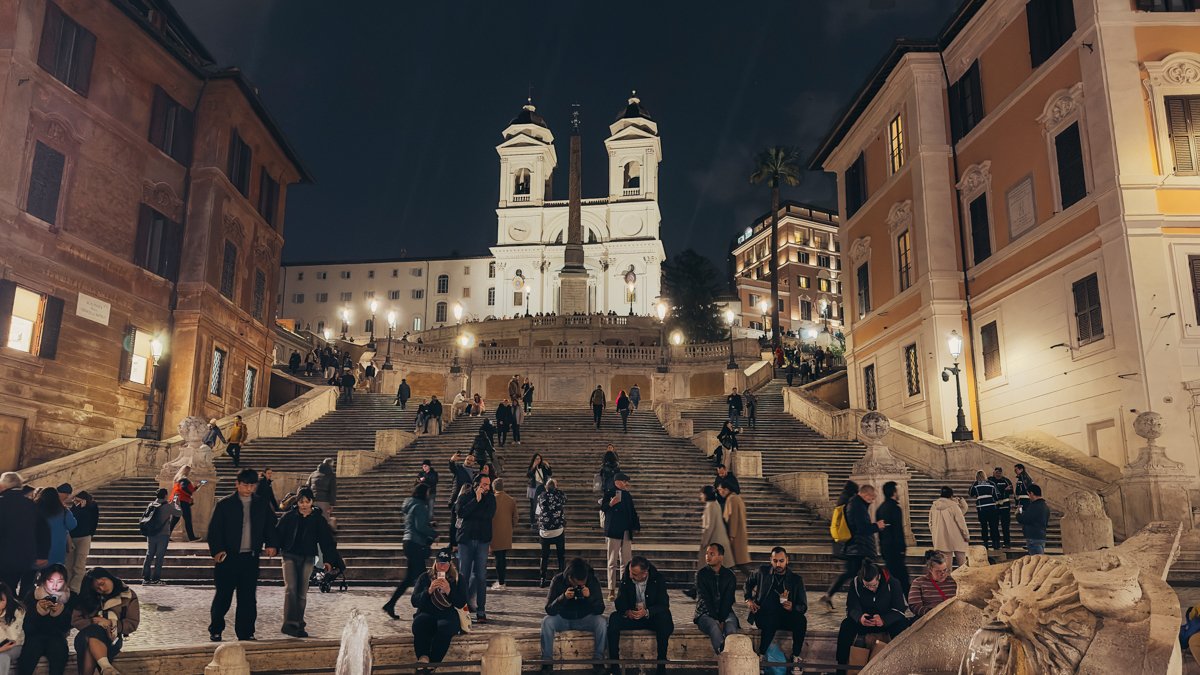
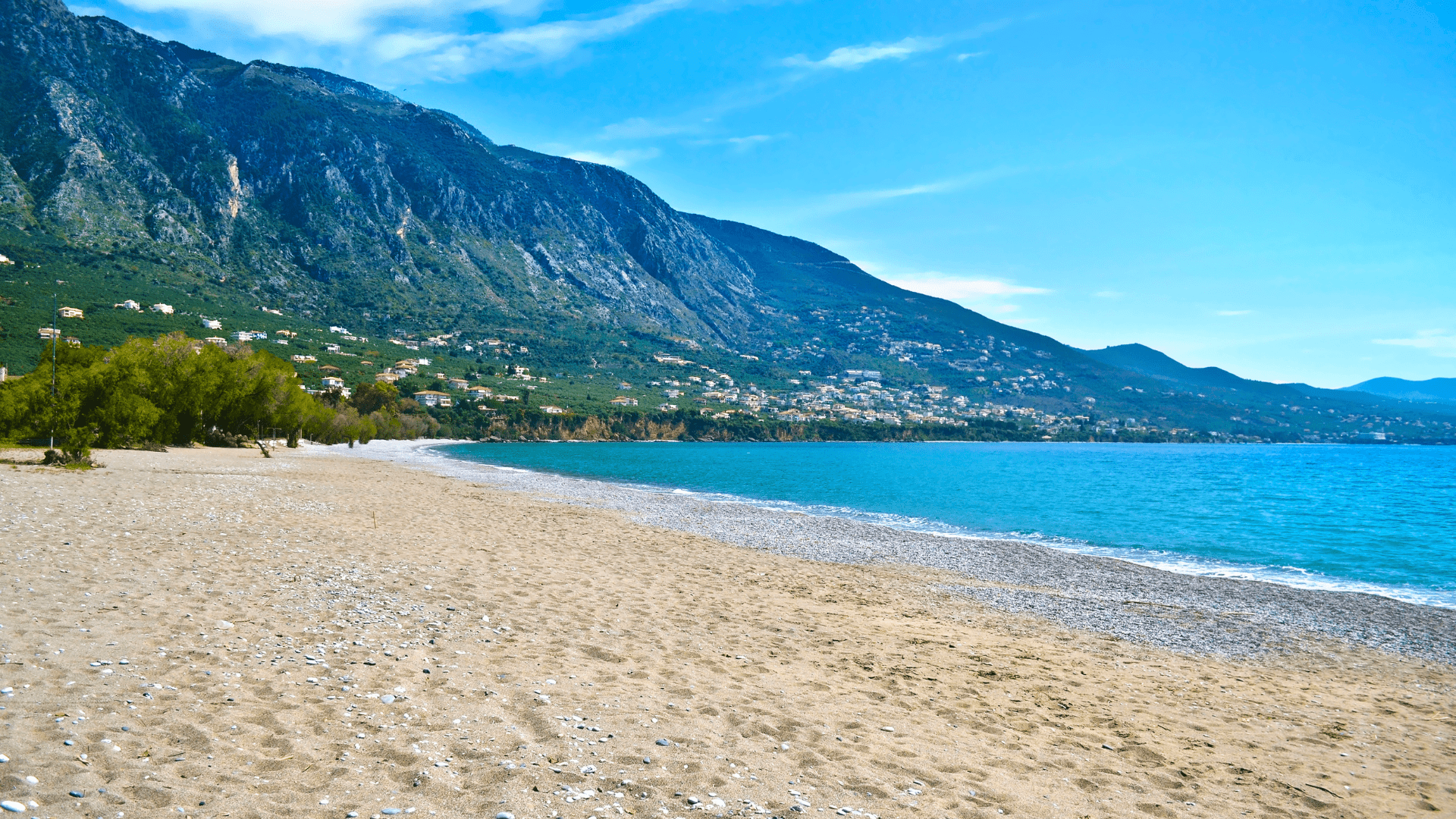
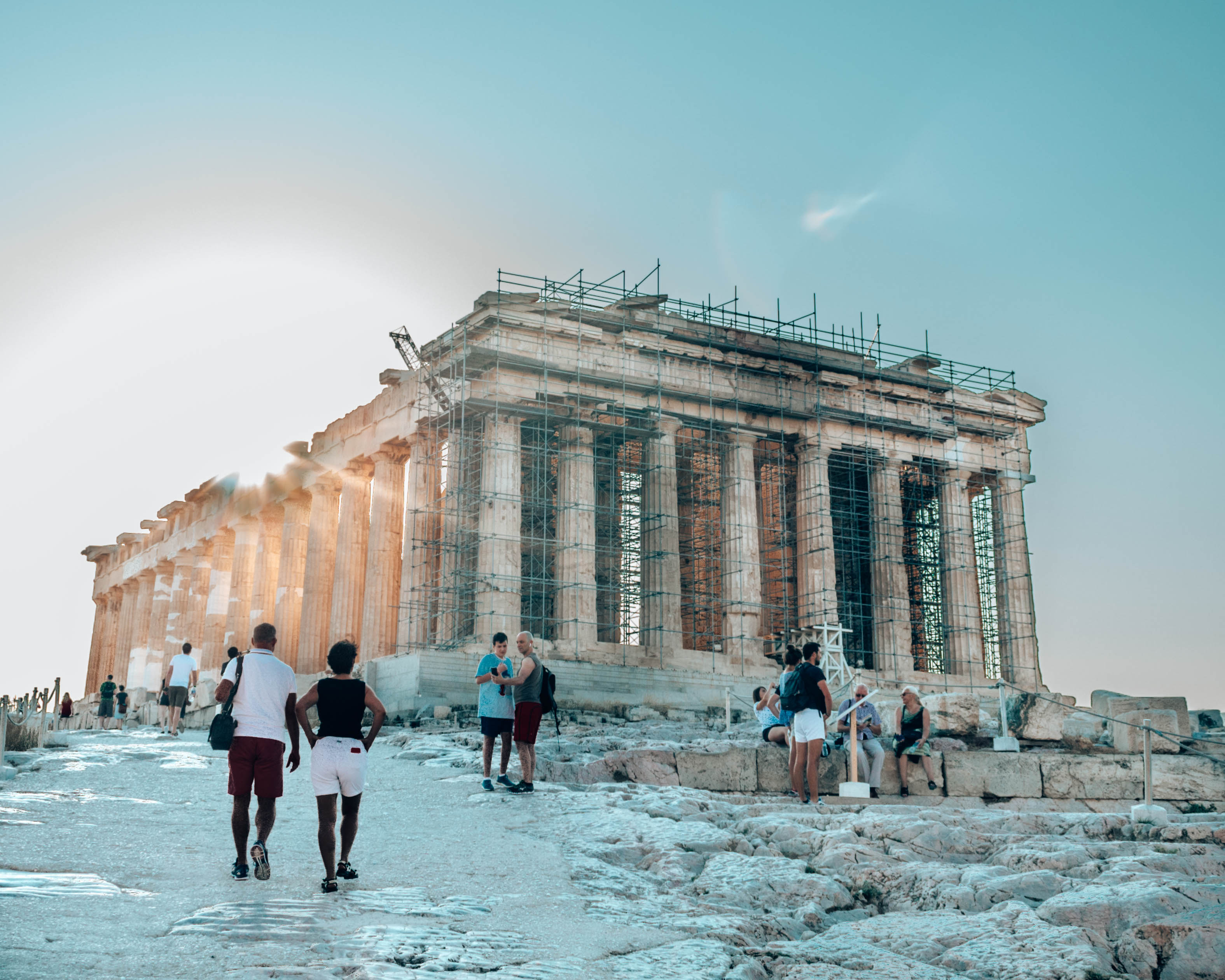

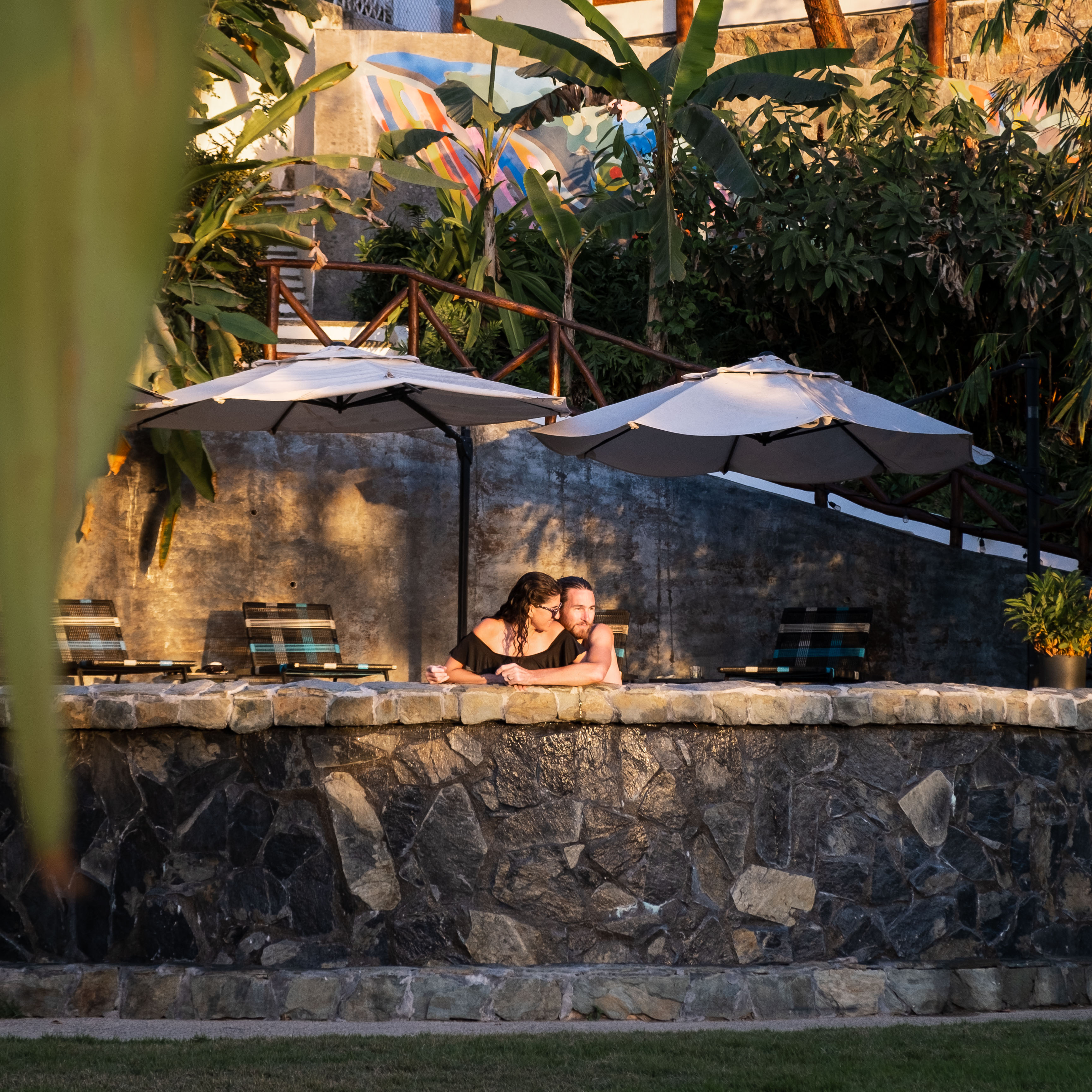


0 Comments
Trackbacks/Pingbacks